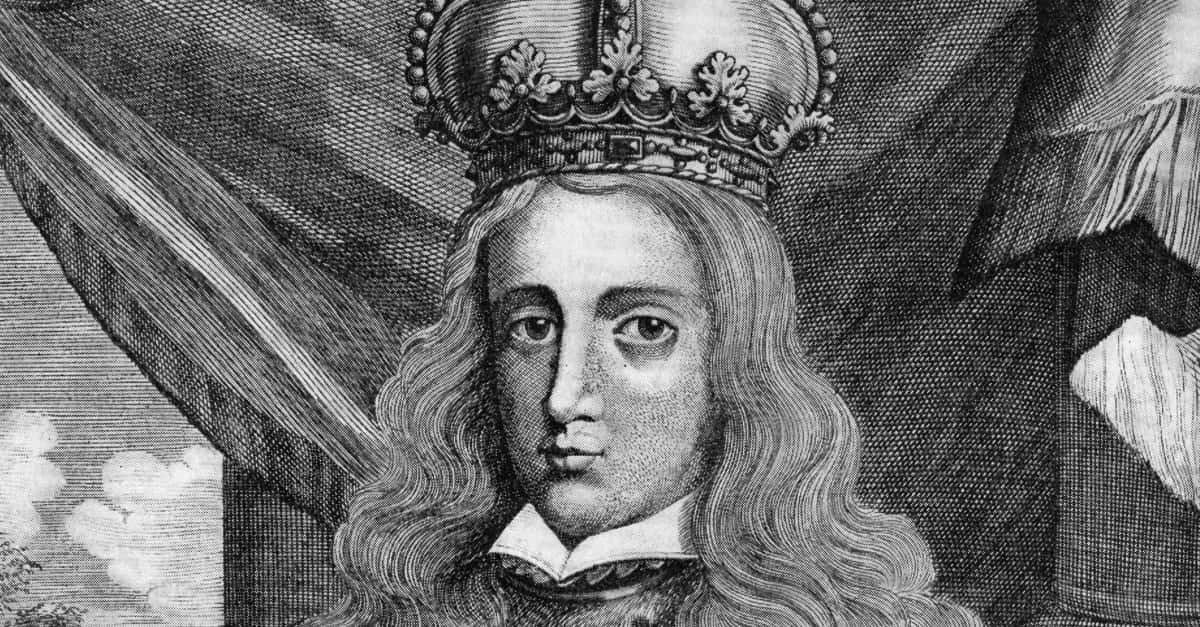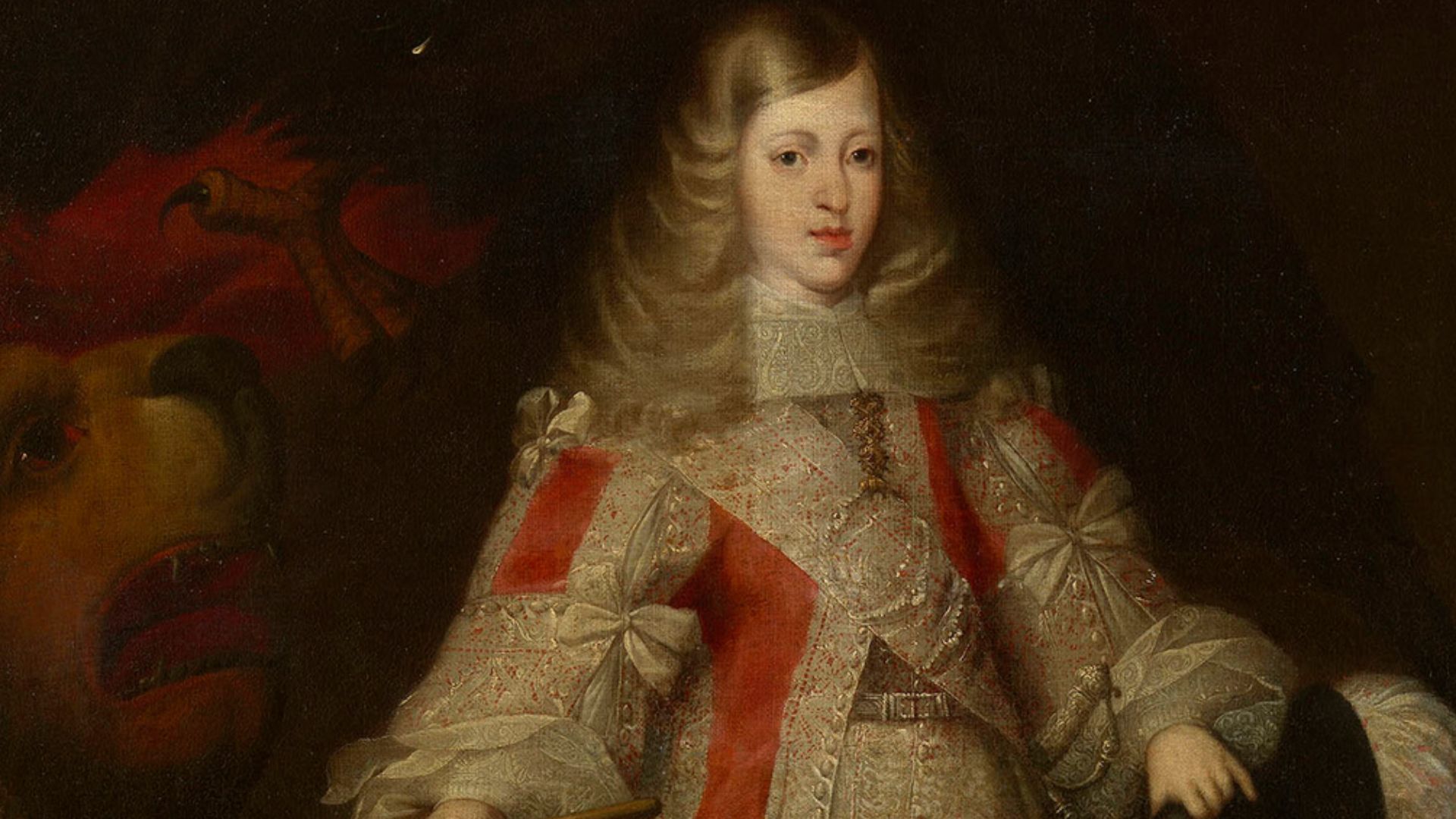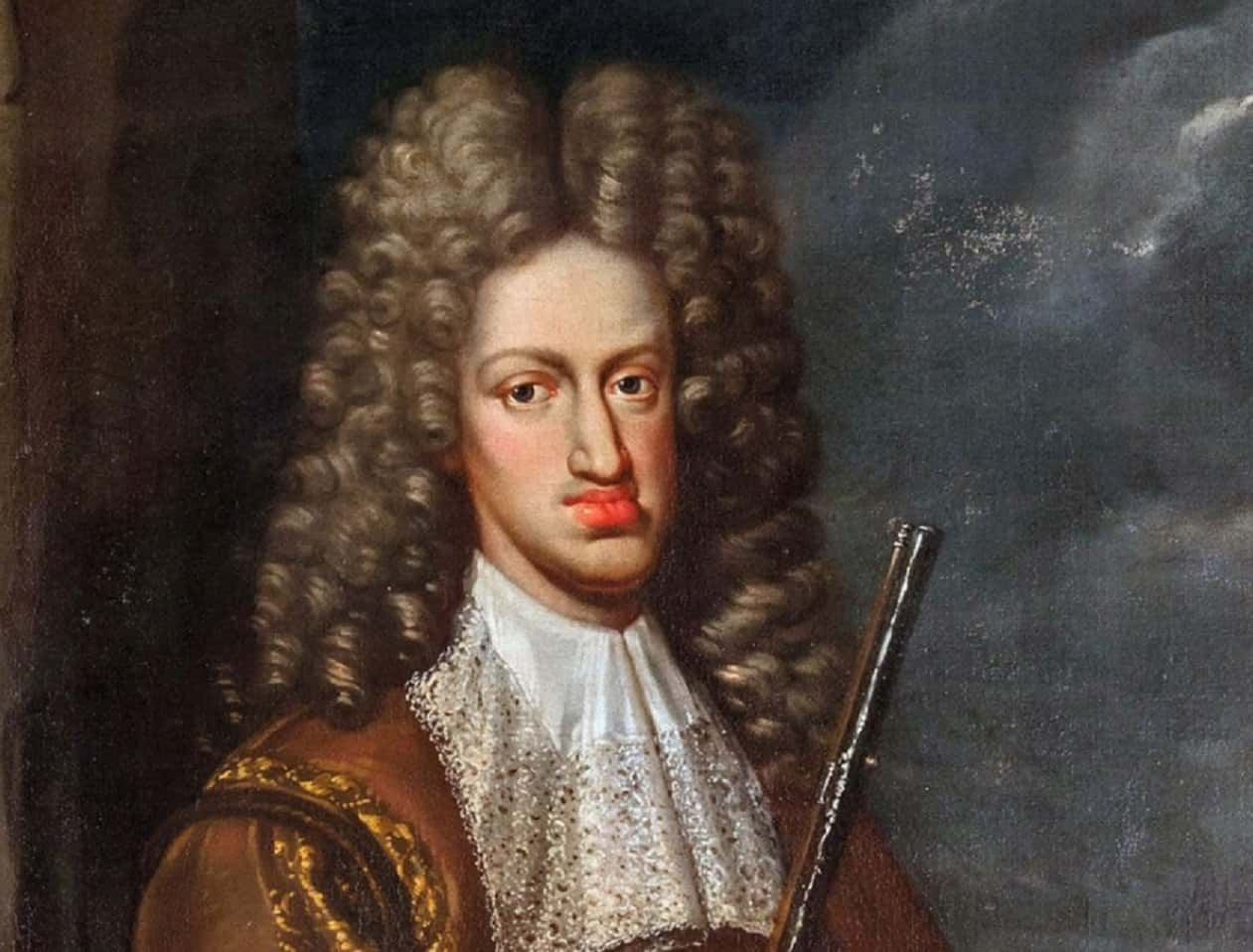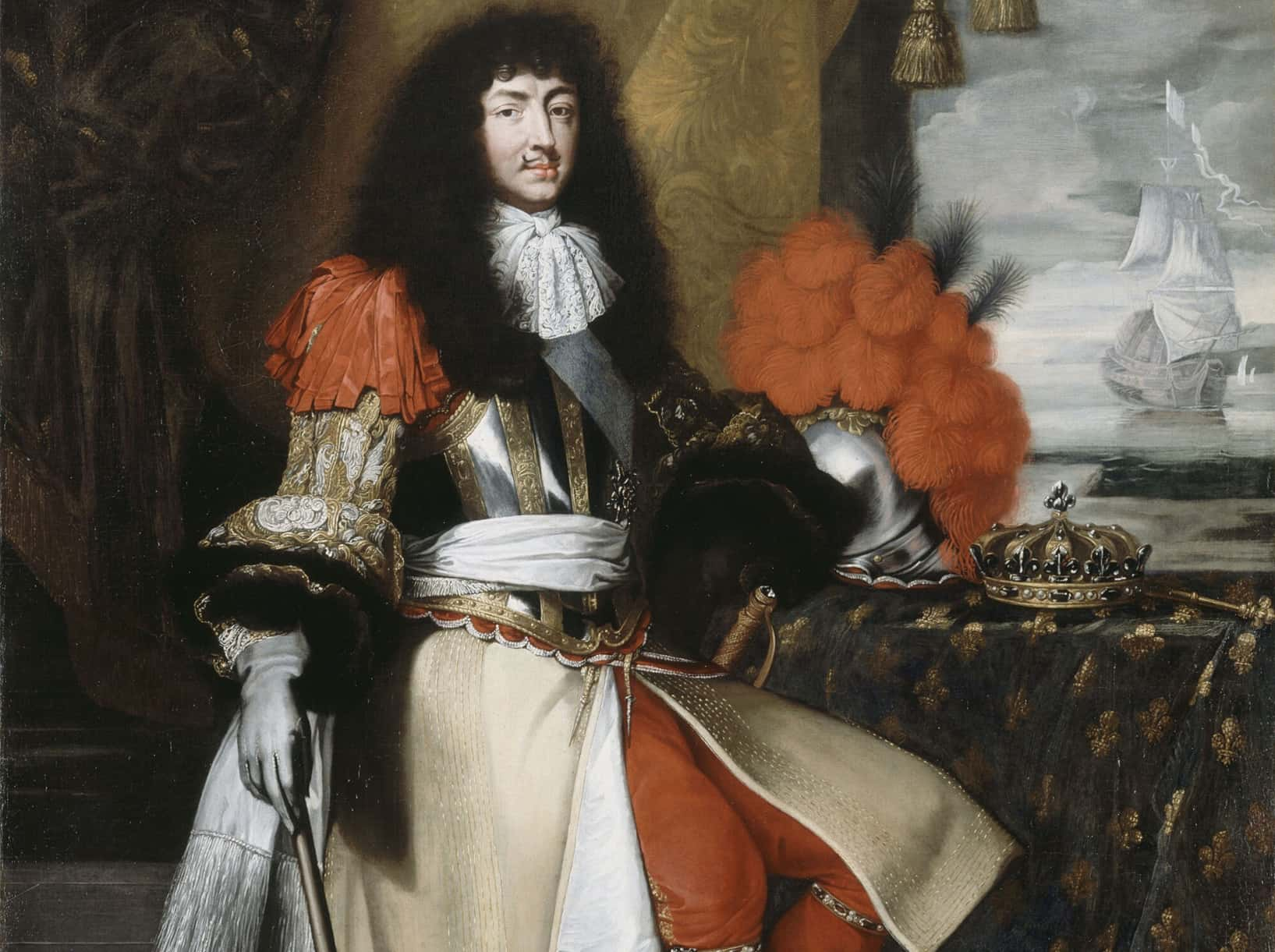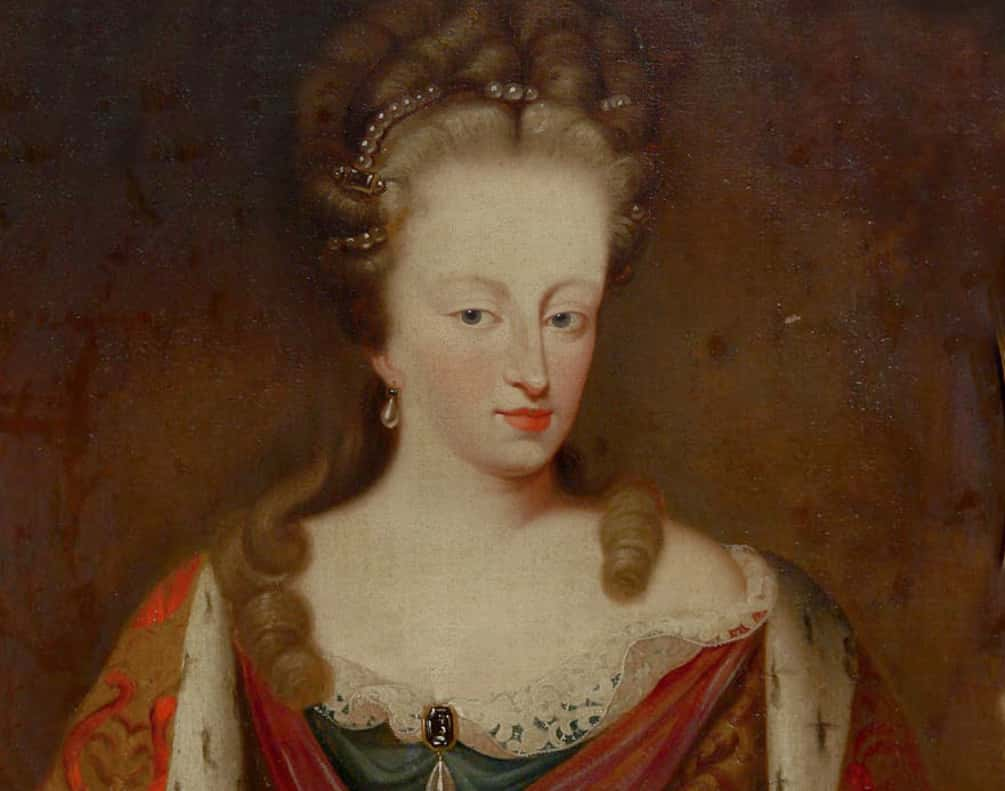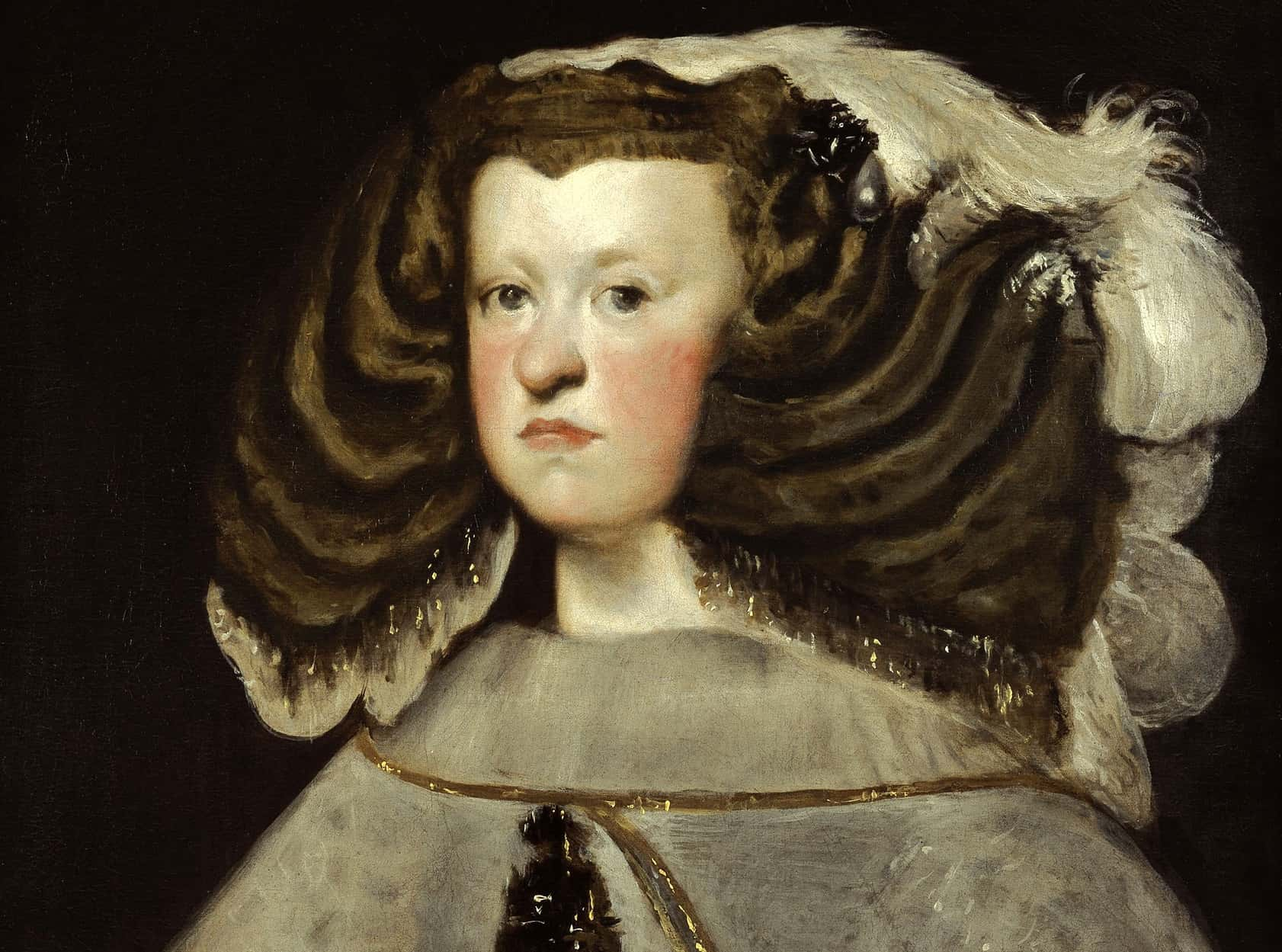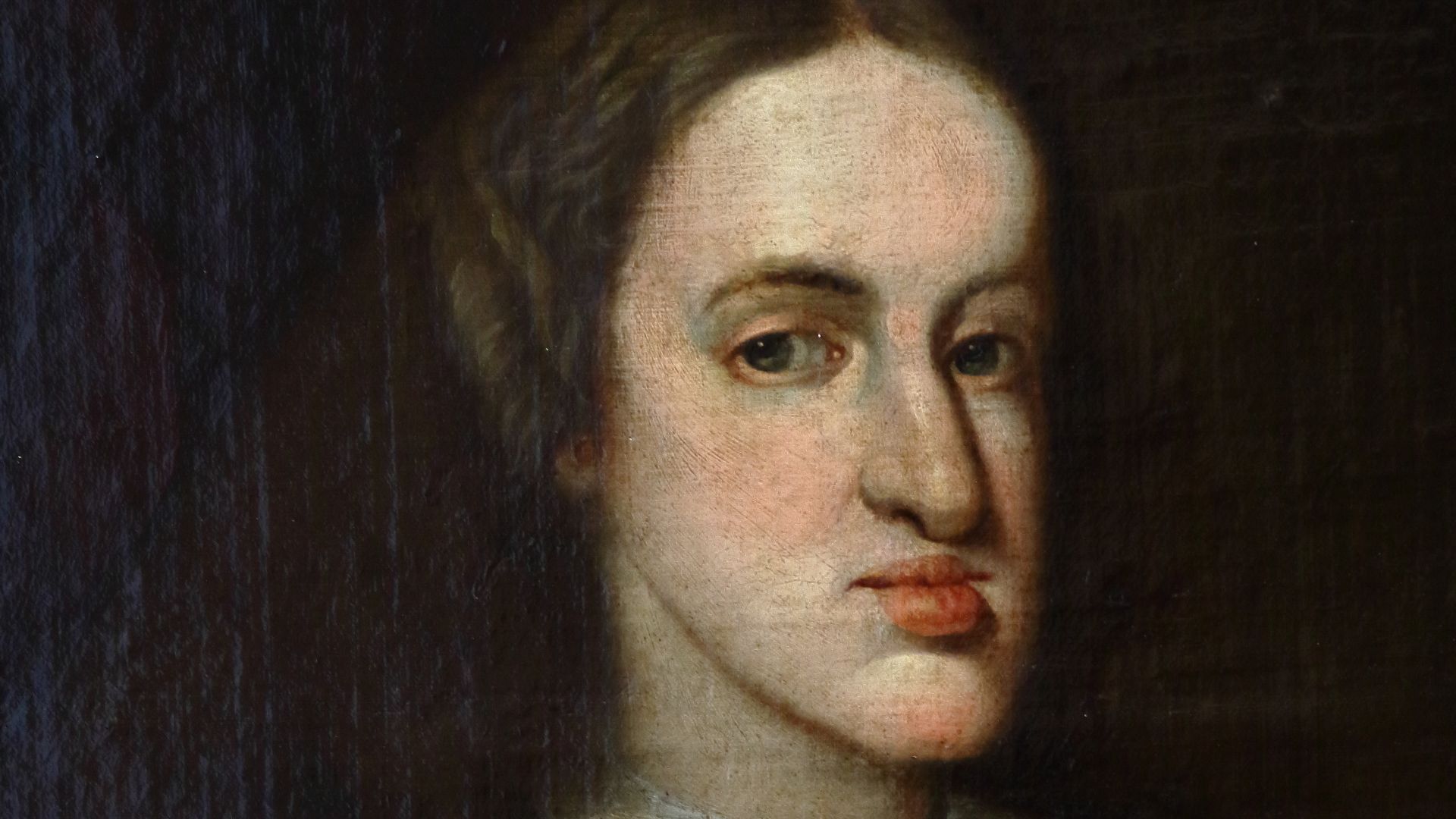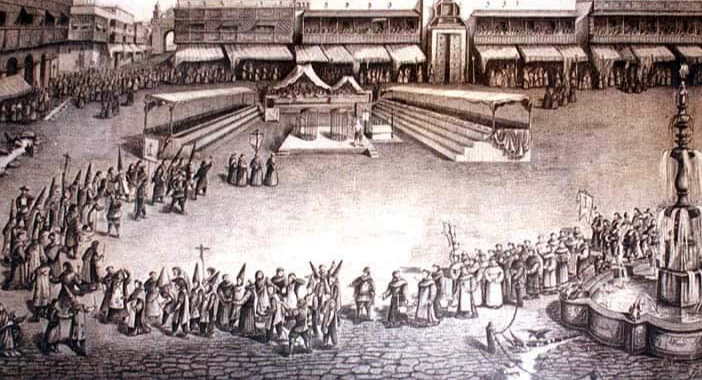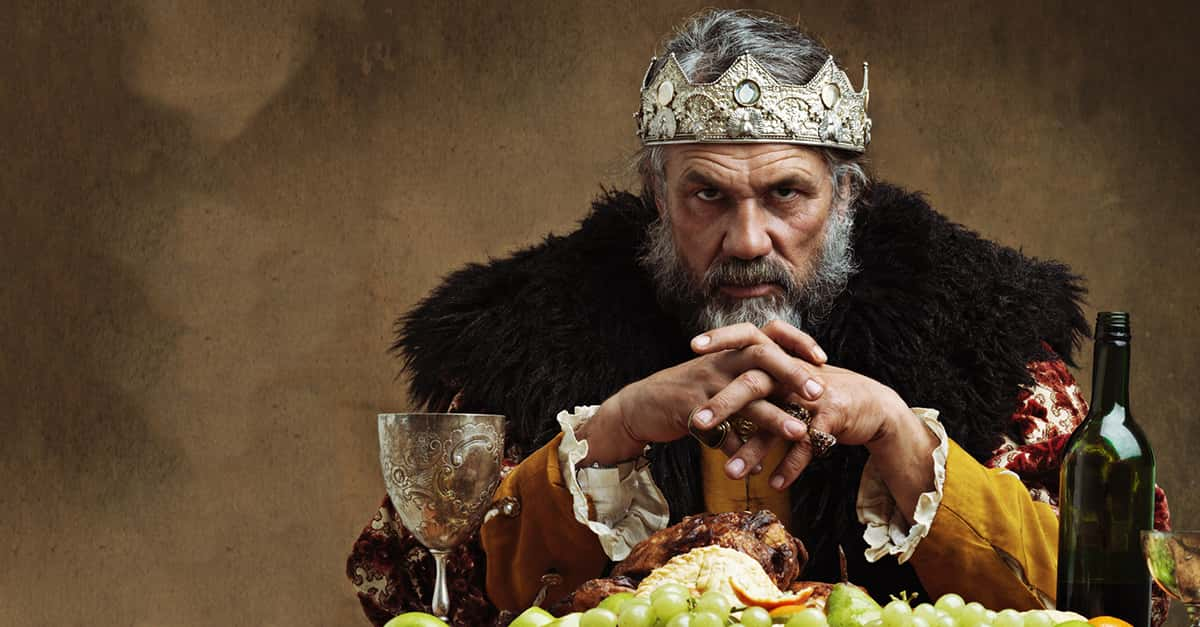Something Rotten In The Habsburg Dynasty
King Charles II was the last hope of the Spanish Habsburg Dynasty, which had ruled an ever-expanding Spain for over a century—and he wasn’t much to hope for. A victim of decades of close inbreeding, from the day he was born Charles wasn’t expected to live. When his rule did come, it was bitter, brief, and doomed everything it touched.
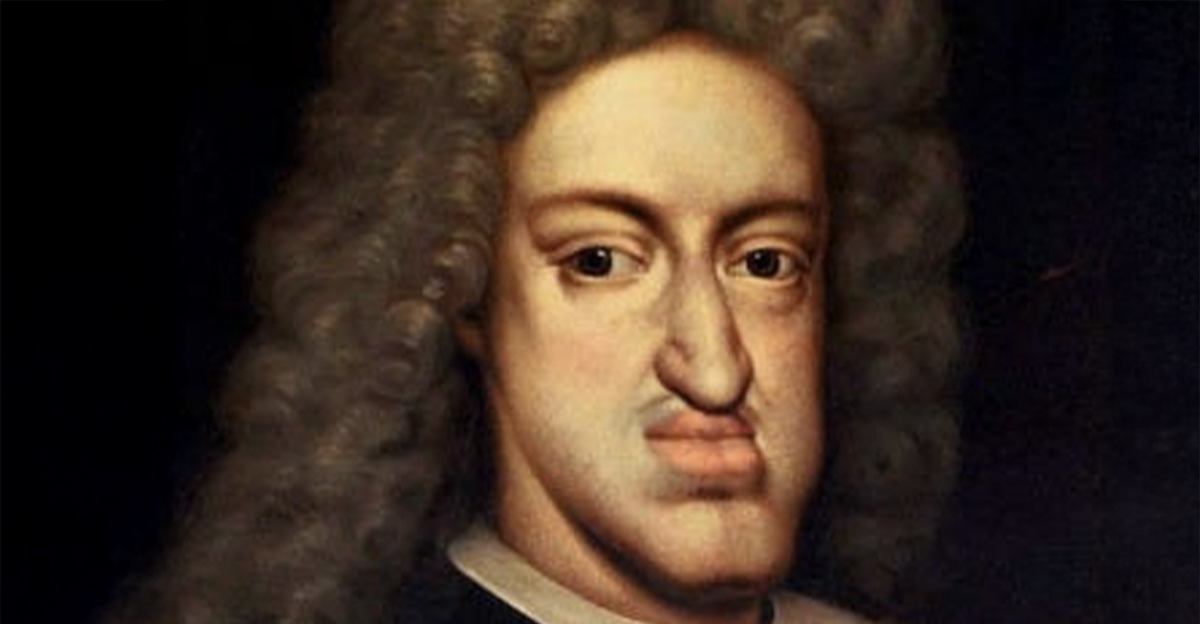
1. He Was The Last Of His Kind
When Charles was born in 1661, his dynasty was already failing. His father, King Philip IV of Spain, hadn’t managed to have a living son during his first marriage, and his second marriage to Charles’s mother Mariana of Austria wasn’t faring much better. Charles would have one full sister, Margaret Theresa, but he would be the only boy in the family.
Yet from the beginning, Charles was in no state to rule a dynasty.
 Juan Carreno de Miranda, Wikimedia Commons
Juan Carreno de Miranda, Wikimedia Commons
2. He Was Seriously Inbred
The Habsburgs were infamous for inbreeding, and his father and mother were actually uncle and niece. While this wasn’t uncommon for the day, the obsessive way the Habsburgs stuck to their own line for generations was. It had horrific consequences. Potentially because of all the recessive genes, Charles was sickly from the start.
As one historian wrote, "from the day of his birth, they were waiting for his death”. This almost happened very early on.
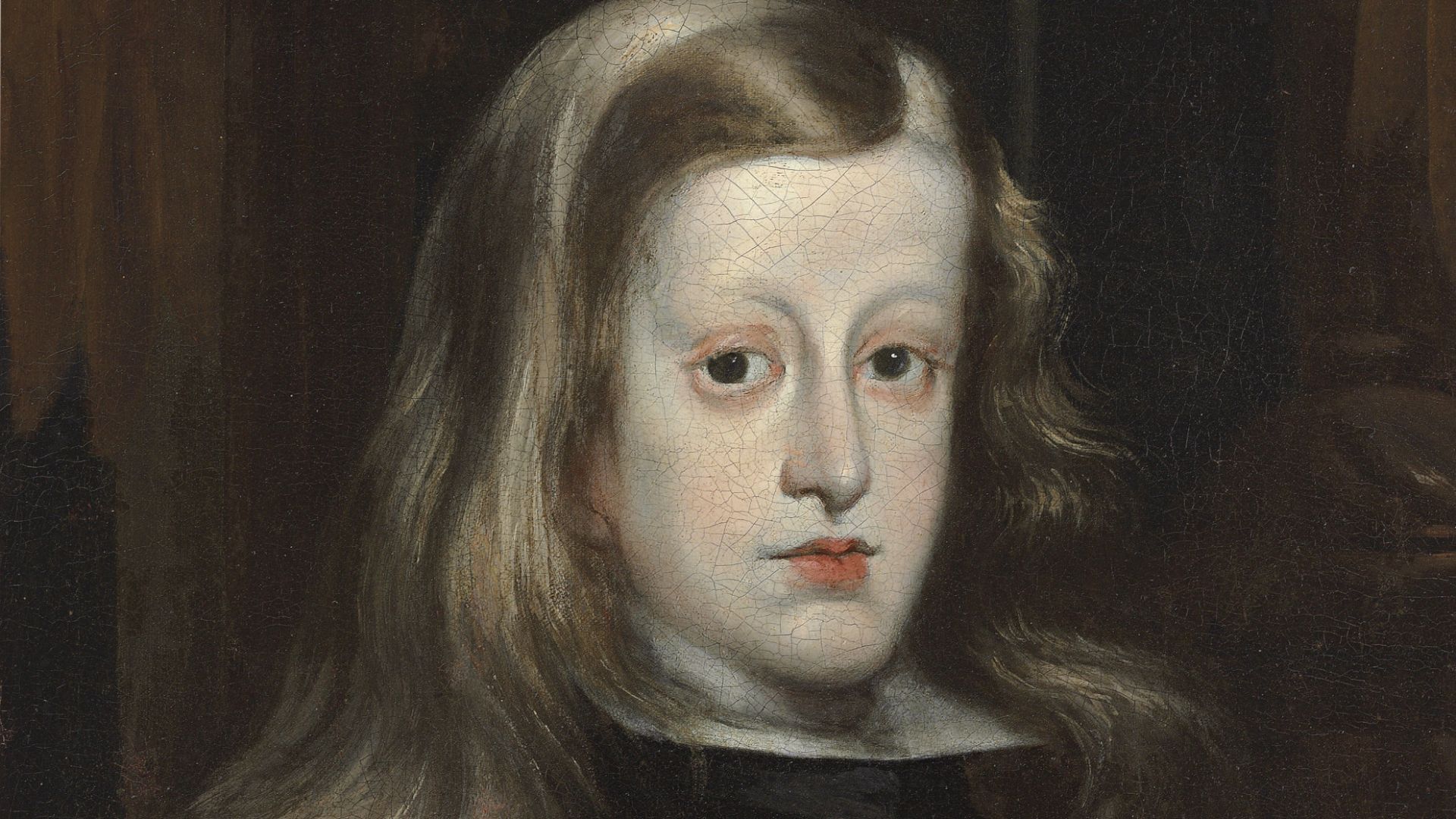 Juan Carreno de Miranda, Wikimedia Commons
Juan Carreno de Miranda, Wikimedia Commons
3. He Was Sickly
As a young boy, Charles was bombarded with potentially fatal illnesses, including measles, chickenpox, rubella, and smallpox, all of which he survived against the odds. However, he didn’t escape his infancy entirely unscathed: He also got rickets, a weakening of the bones usually due to a vitamin D deficiency, and had to wear leg braces until he was five.
His most infamous physical ailment, however, was with him all his life.
4. He Had A Startling Trait
At the time, the Habsburgs were easily identifiable by just one trait: The “Habsburg jaw”. Also called the “Austrian lip”—thanks to its equal prevalence in the Austrian Habsburg line—the Habsburg lower jaw jutted out, giving many people in the family a prominent chin and a crossbite. This too was likely the result of inbreeding.
Although historians have noted this jaw in many of Charles’s relatives’ portraits, Charles himself seems to have had the most prominent one on record. So prominent, in fact, that it interfered with his daily life.
5. He Couldn’t Eat Properly
As Charles grew up and began taking care of himself, it became clear that his Habsburg jaw was getting in the way of this independence. One of his contemporaries reported that his lower jaw was so distinct from his upper, he had difficulty chewing. His solution was disgusting. Reportedly, Charles would just swallow his food whole where possible, and suffered stomach problems as a result.
Yet the issues kept on coming.
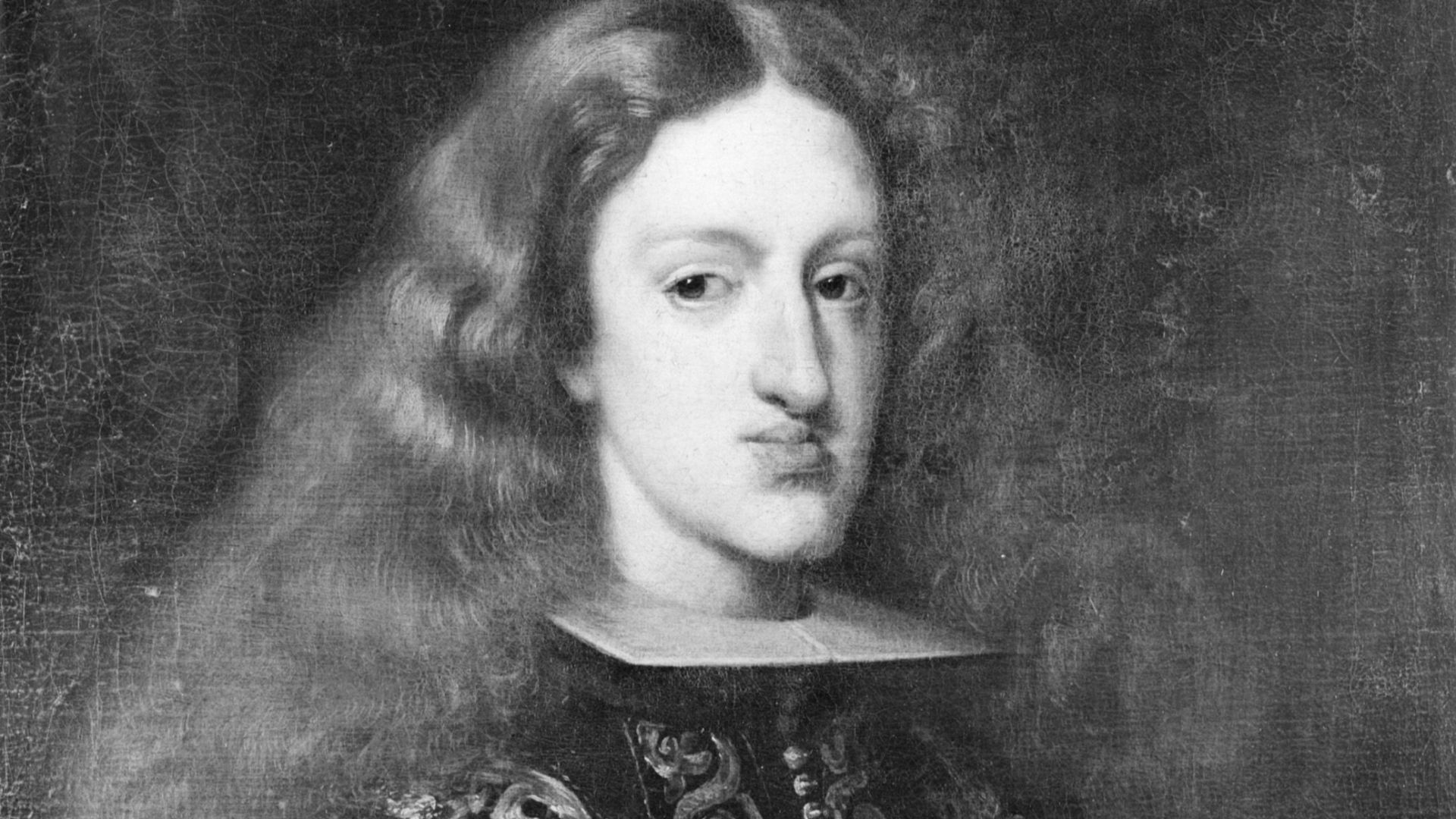 Claudio Coello, Wikimedia Commons
Claudio Coello, Wikimedia Commons
6. He Couldn’t Speak
Charles also suffered from an enlarged tongue. It was difficult for him to enunciate and be understood, and there are reports that he couldn’t even speak at all until the age of four, and was treated mostly as an infant until at least the age of 10.
Historians continue to debate which ailments could have been due to inbreeding, and which weren’t. Sadly, though, it’s not just inbreeding that affected Charles.
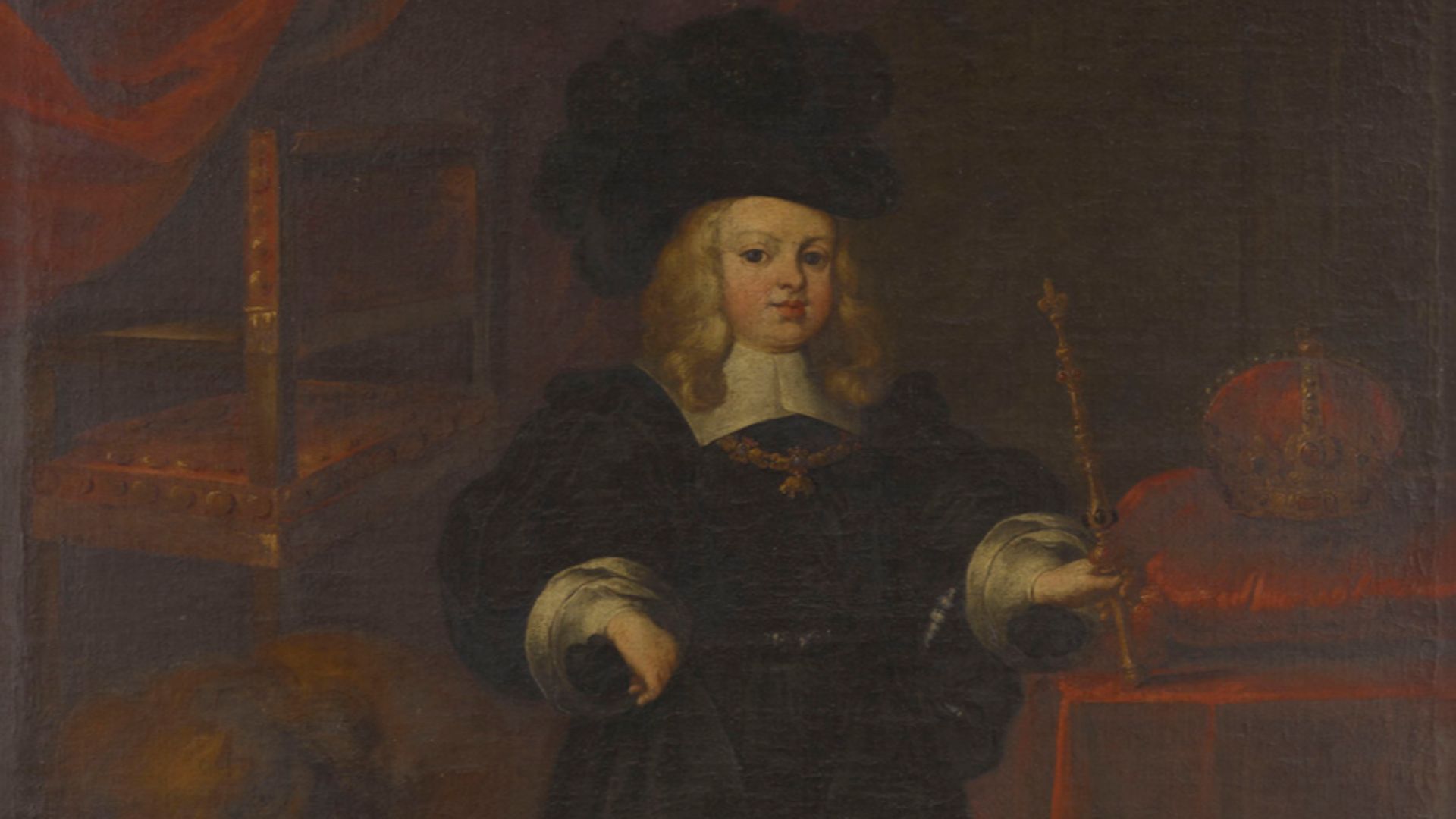 BotMultichillT, Wikimedia Commons
BotMultichillT, Wikimedia Commons
7. He Had A Fateful Infection
Perhaps Charles’s most severe ailment came not from genetics, but likely from bad luck: Some suggest that, thanks to one of his infant infections, Charles also suffered from hydrocephalus, where fluid builds up in the brain, engorges the head, and can cause mobility issues, among other ailments. It’s no wonder he earned the nickname “El Hechizado” or “The Bewitched”.
There was more bad luck to come.
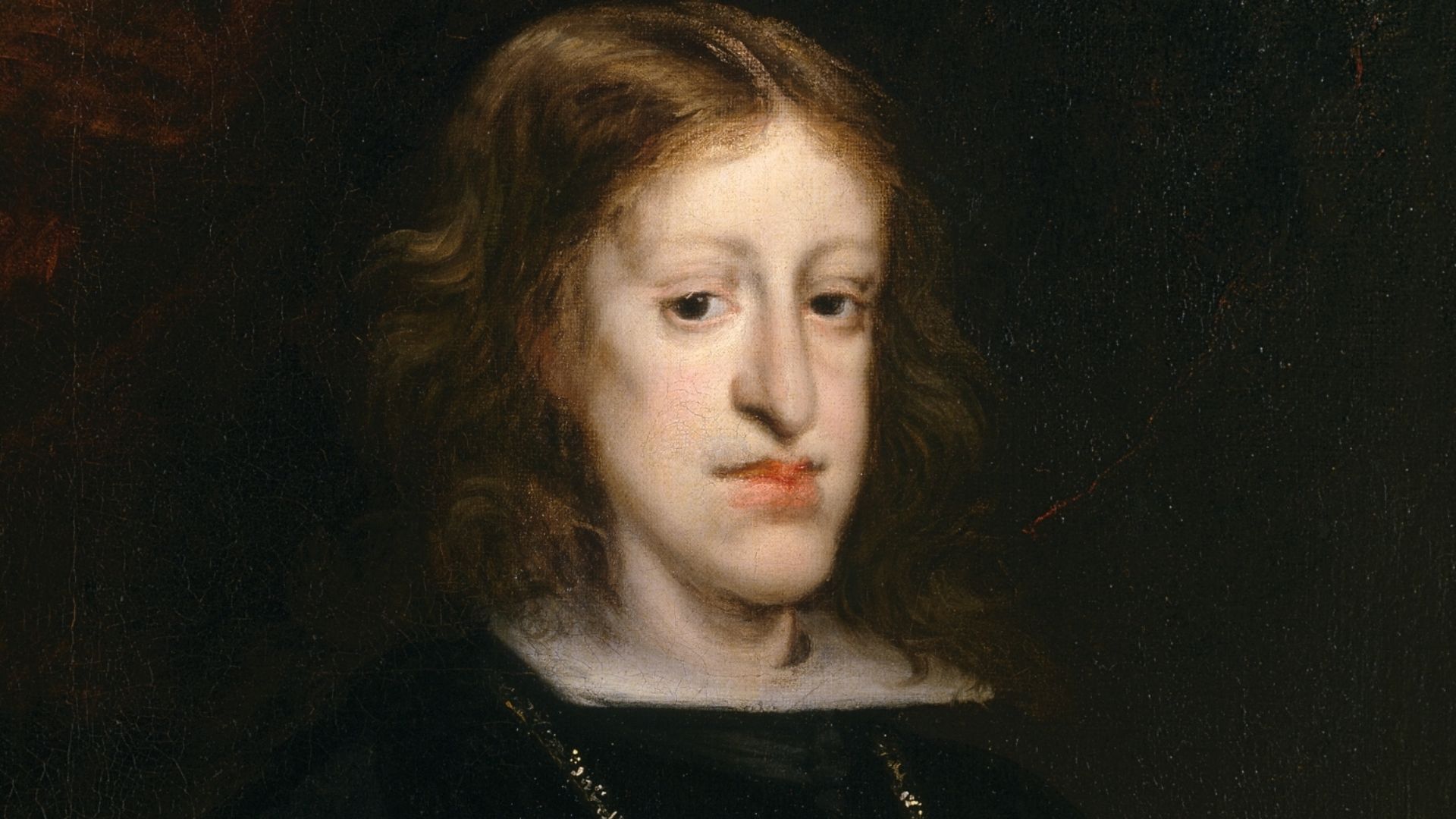 Juan Carreno de Miranda, Wikimedia Commons
Juan Carreno de Miranda, Wikimedia Commons
8. His Mother Controlled Him
In 1665, Charles’s father King Philip IV passed, leaving him as a toddler king. His mother Mariana quickly took over as regent—likely a necessity even if he was of age—and set about getting the kingdom in order. It would have been difficult for the young boy to lose his father, no matter the circumstances. But as Charles grew more aware of his kingdom, he also must have grown more disturbed.

History's most fascinating stories and darkest secrets, delivered to your inbox daily.
9. His Kingdom Was In Ruins
By the time Charles became king, the Habsburg kingdom of Spain was both massive—and in dire trouble. The “Little Ice Age” decades earlier had felled crops and people alike, severely affecting the realm’s economy and rendering it dependent on bigger powers like Britain, France, and the Netherlands.
To make matters worse, Charles seemed particularly ill-suited to rule…
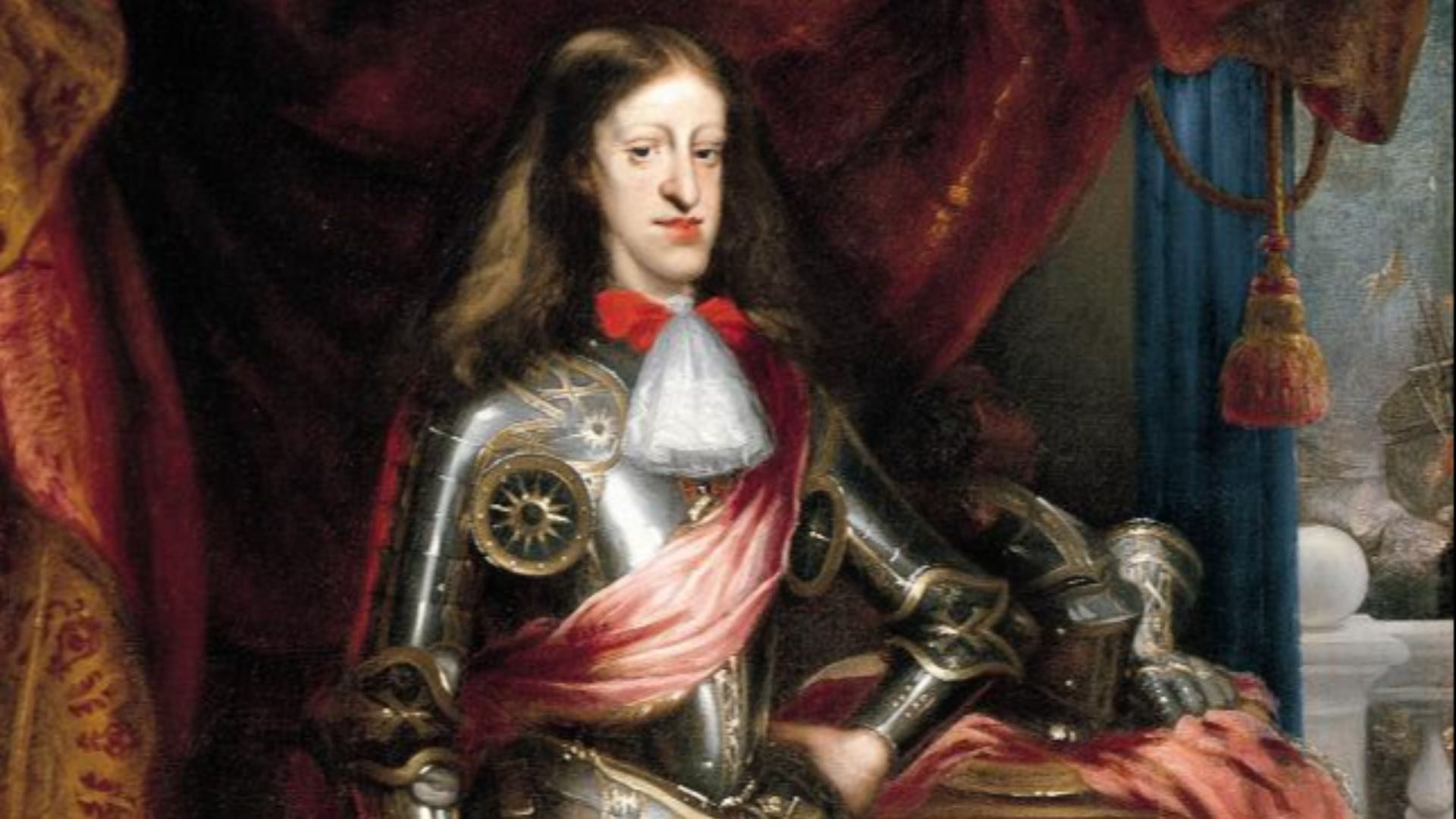 Juan Carreno de Miranda and workshop, Wikimedia Commons
Juan Carreno de Miranda and workshop, Wikimedia Commons
10. People Used Him
As king, it soon became clear that Charles would not be a glorious solo ruler. Likely due in part to his mental and physical disabilities, his court during this time—and for the rest of his life—was largely controlled by courtiers, councillors, and even his own mother grasping for the power he was born into. But Charles still had the ability to surprise people.
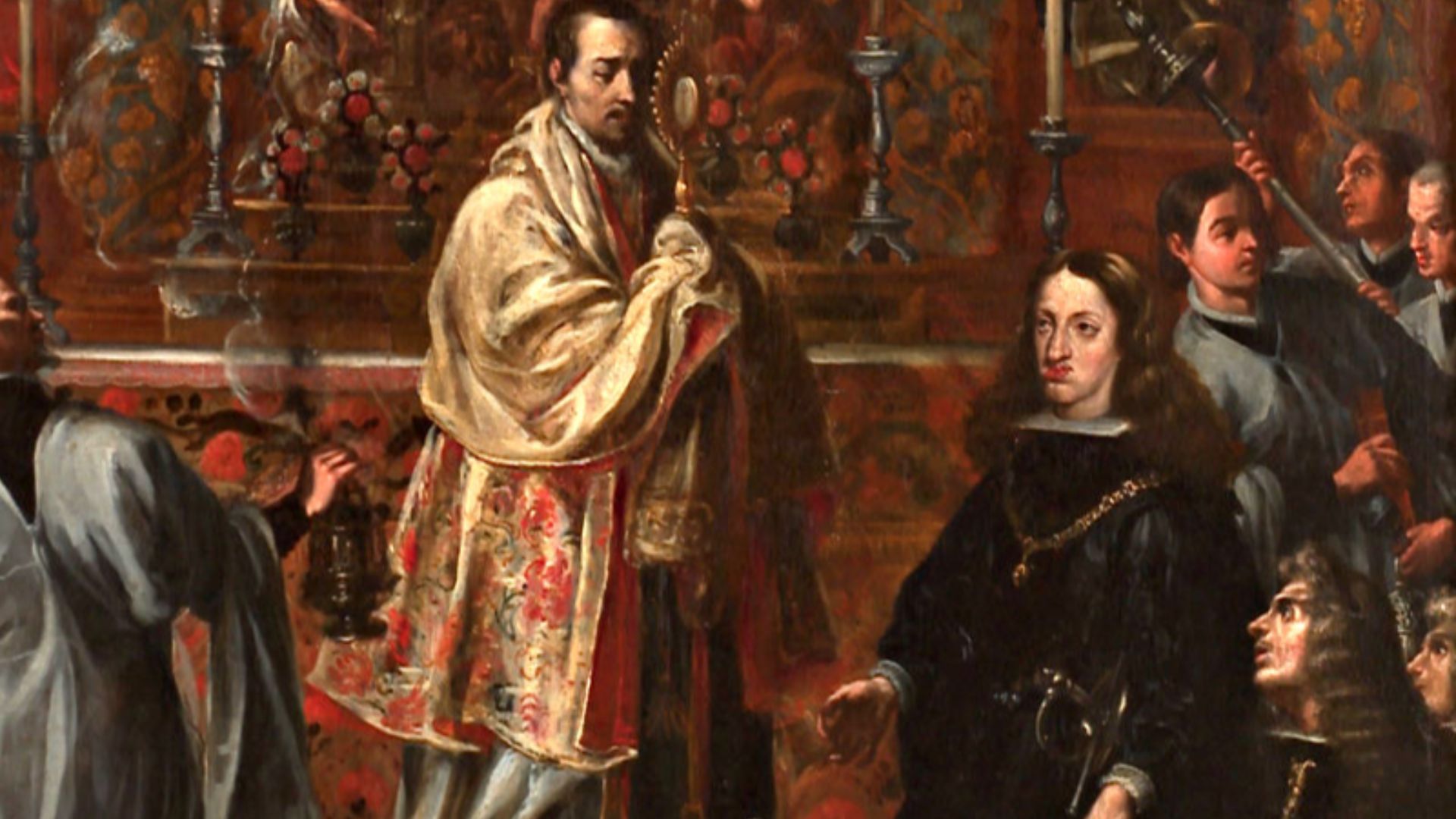 Pedro Ruiz Gonzalez, Wikimedia Commons
Pedro Ruiz Gonzalez, Wikimedia Commons
11. He Worked Hard
It makes a more dramatic picture to think of Charles II slobbering into his food while others ran the kingdom around him. But the truth is more complicated. There are reports that Charles did play a somewhat active role in administration; one envoy from the Sultan of Morocco described how Charles personally received him and then stayed throughout the discussions.
Charles had other qualities to recommend him, too.
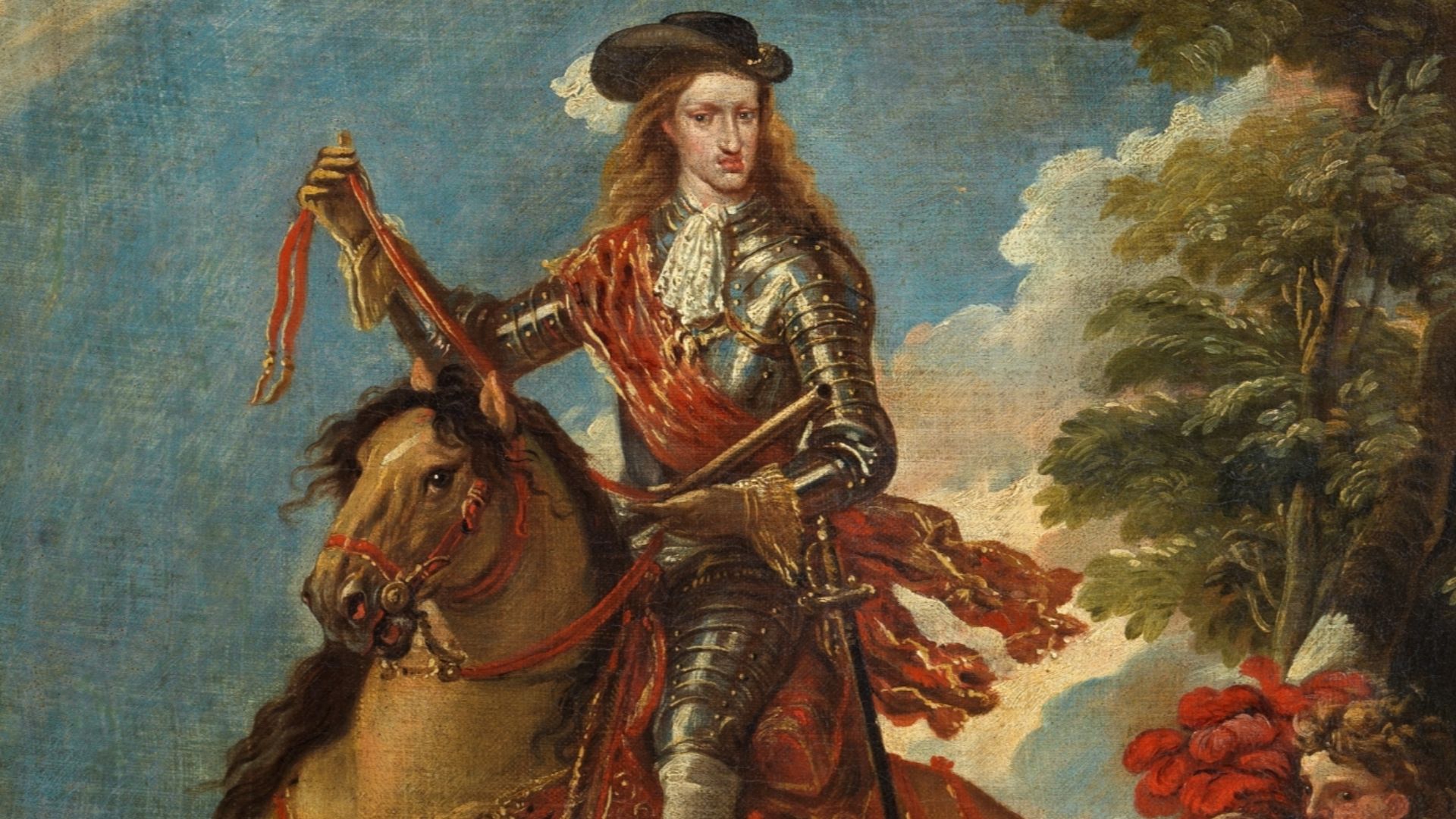 Luca Giordano, Wikimedia Commons
Luca Giordano, Wikimedia Commons
12. He Had A Favorite Hobby
There is more evidence to suggest that Charles doesn’t fit our reductive picture of an ailing, inbred king. Although he had physical limitations, there are ample stories about how much he loved to hunt, like many young courtiers of his day, and how much he enjoyed physical activity outdoors. Yet Charles did have at least one Achilles heel in the “courtier” department.
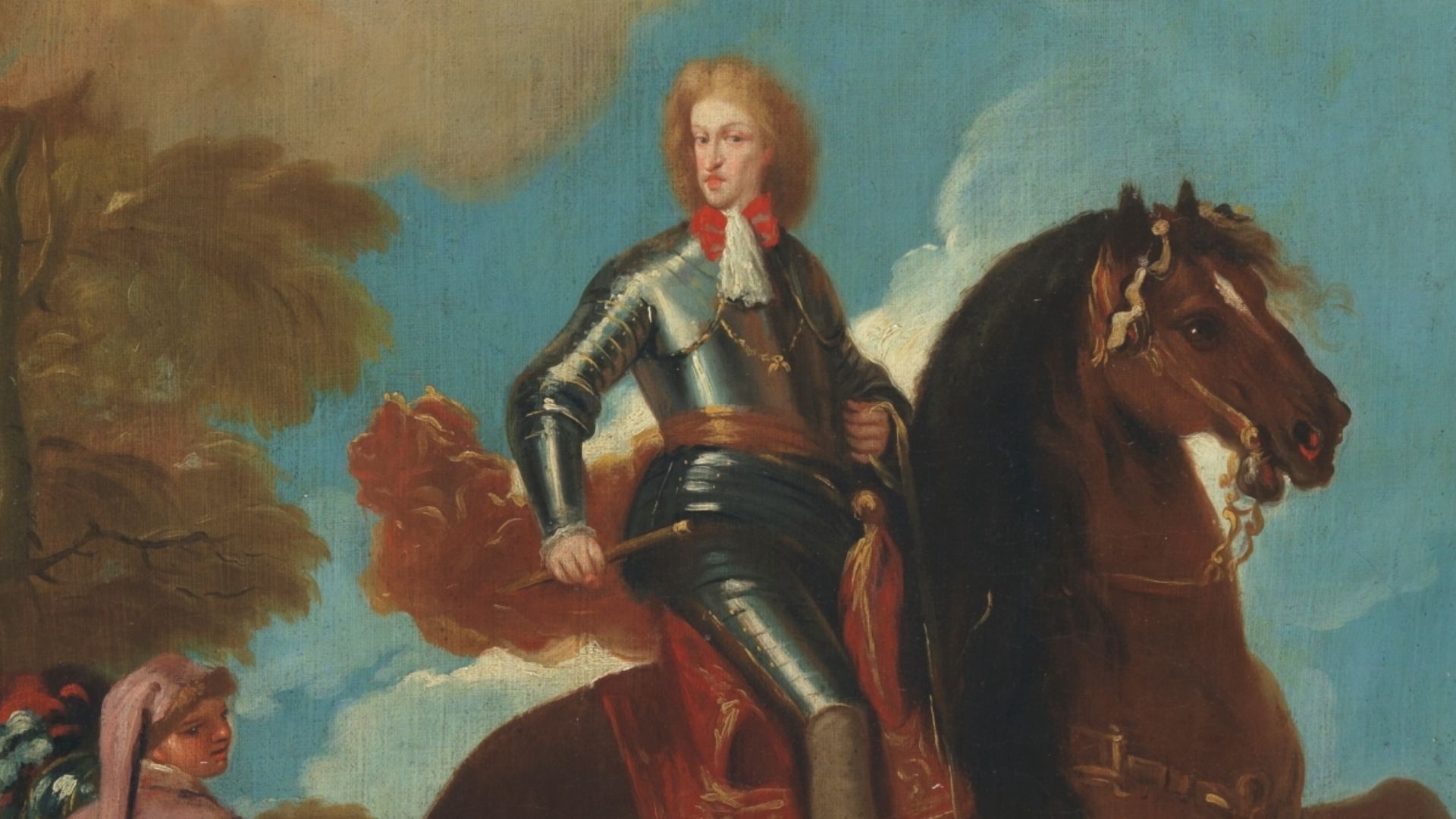 Luca Giordano, Wikimedia Commons
Luca Giordano, Wikimedia Commons
13. He Suffered From Shyness
Many foreign diplomats noted that Charles could be amiable and even generous with his time and resources, but that throughout international talks he often lacked self-confidence and could fall into shyness. Heartbreakingly, still others noted that Charles suffered from bouts of depression, which must have also interfered with this work.
Still, there was one thing everyone agreed Charles was good for: Marriage.
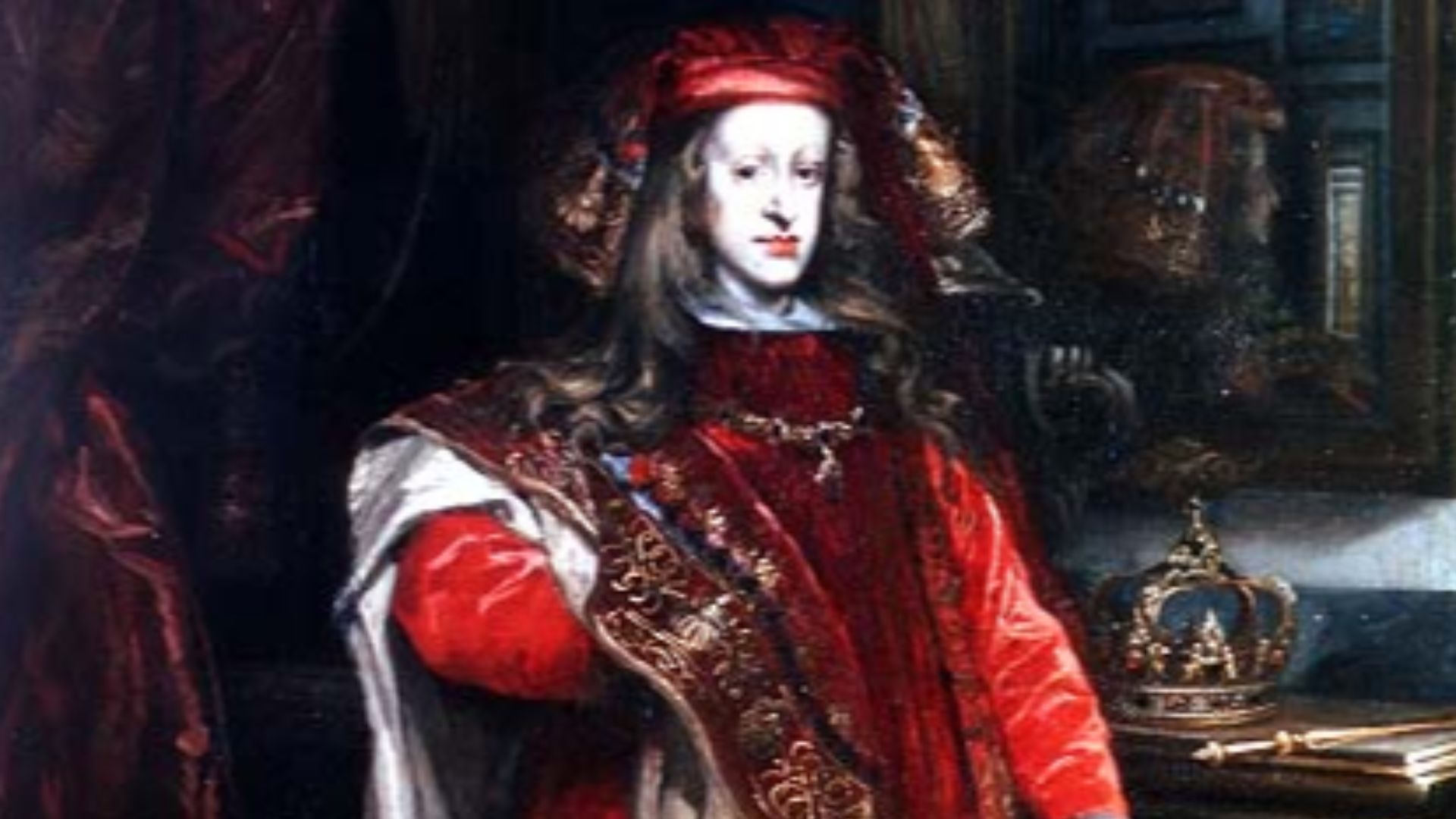 Juan Carreno de Miranda, Wikimedia Commons
Juan Carreno de Miranda, Wikimedia Commons
14. He Made A Powerful Alliance
The year Charles turned 18, he made the next step toward adulthood. One of his ministers brokered a match between him and the 17-year-old Marie Louise of Orleans. The niece of King Louis XIV and the daughter of the Duke of Orleans, Marie Louise was a crucial link in an alliance with the more powerful France. But not everyone was happy about it.
15. His Bride Hated The Idea
Pretty and cultured, Marie Louise was a darling of the French court and her father’s favorite child. More than that, she was in love with her cousin, the Dauphin of France. So when the elders in her life told her she was being packed off to marry the deformed Spanish king, the poor girl spent the next weeks weeping her eyes out.
Her upcoming marriage couldn’t have provided her much solace.
16. He Fell In Love
In August of 1679, Marie Louise and Charles married by proxy, before officially tying the knot that November, just weeks after Charles’s 18th birthday. According to reports, Charles soon fell deeply in love with his new bride, and would remain in love with her to the end of his days. But it wasn’t enough to overcome the nightmare that was his court.
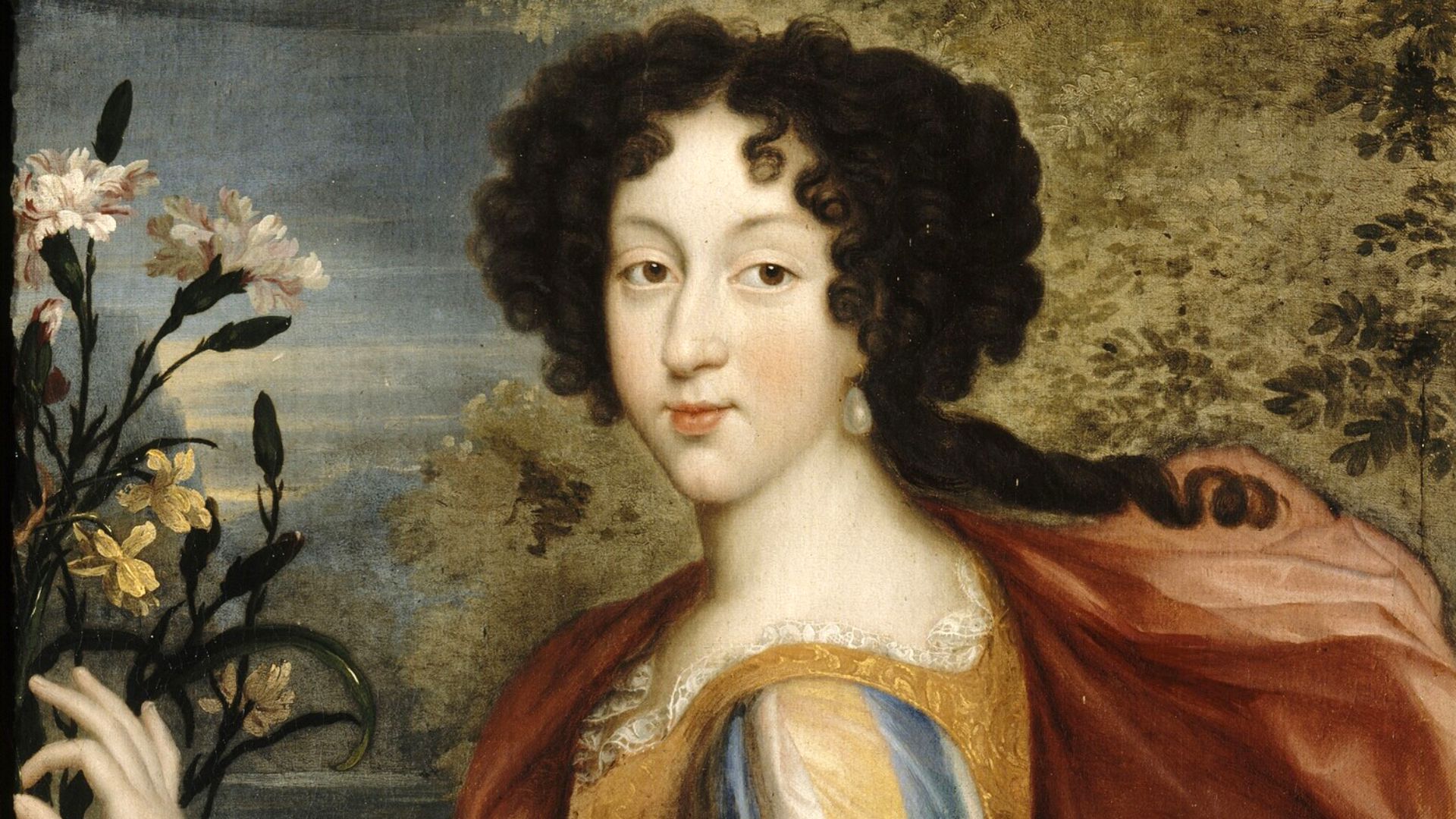 Louis Ferdinand Elle the Elder, Wikimedia Commons
Louis Ferdinand Elle the Elder, Wikimedia Commons
17. His Court Was Icy
While the French court of Marie Louise’s time was an infamously loose, languid affair under the “Sun King” Louis XIV, the Spanish court was another atmosphere entirely, and not in a good way. It was dour, rigid, and obsessed with strict forms of etiquette: Marie Louise soon discovered that her new courtiers weren’t even allowed to touch her. Then there was the matter of her new husband.
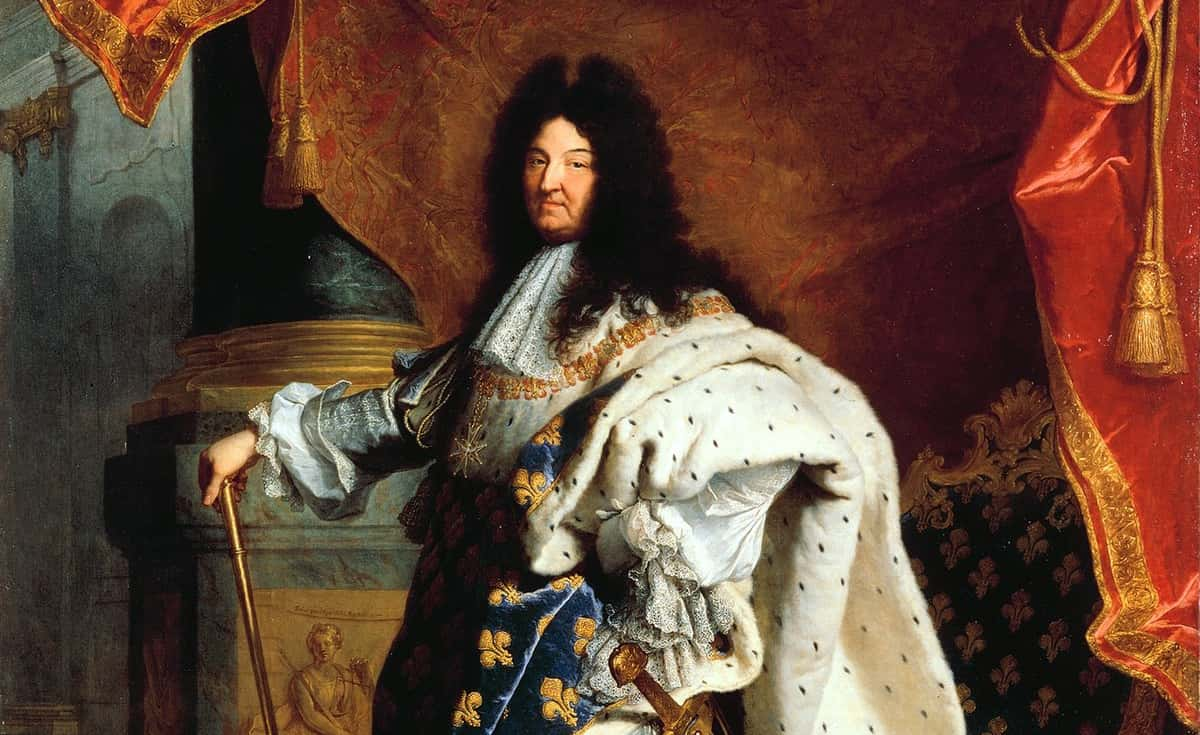 Hyacinthe Rigaud, Wikimedia Commons
Hyacinthe Rigaud, Wikimedia Commons
18. His Bedroom Life Was Controversial
For the next decade, Charles and Marie Louise tried to produce an heir who would carry on the Habsburg name. The, well, “quality” of their efforts is controversial: Although there is necessarily no physical evidence, many have suggested that Charles was impotent or else had other difficulties in bed, which didn’t help matters.
Indeed, Marie Louise’s own testimony suggests something was very wrong.
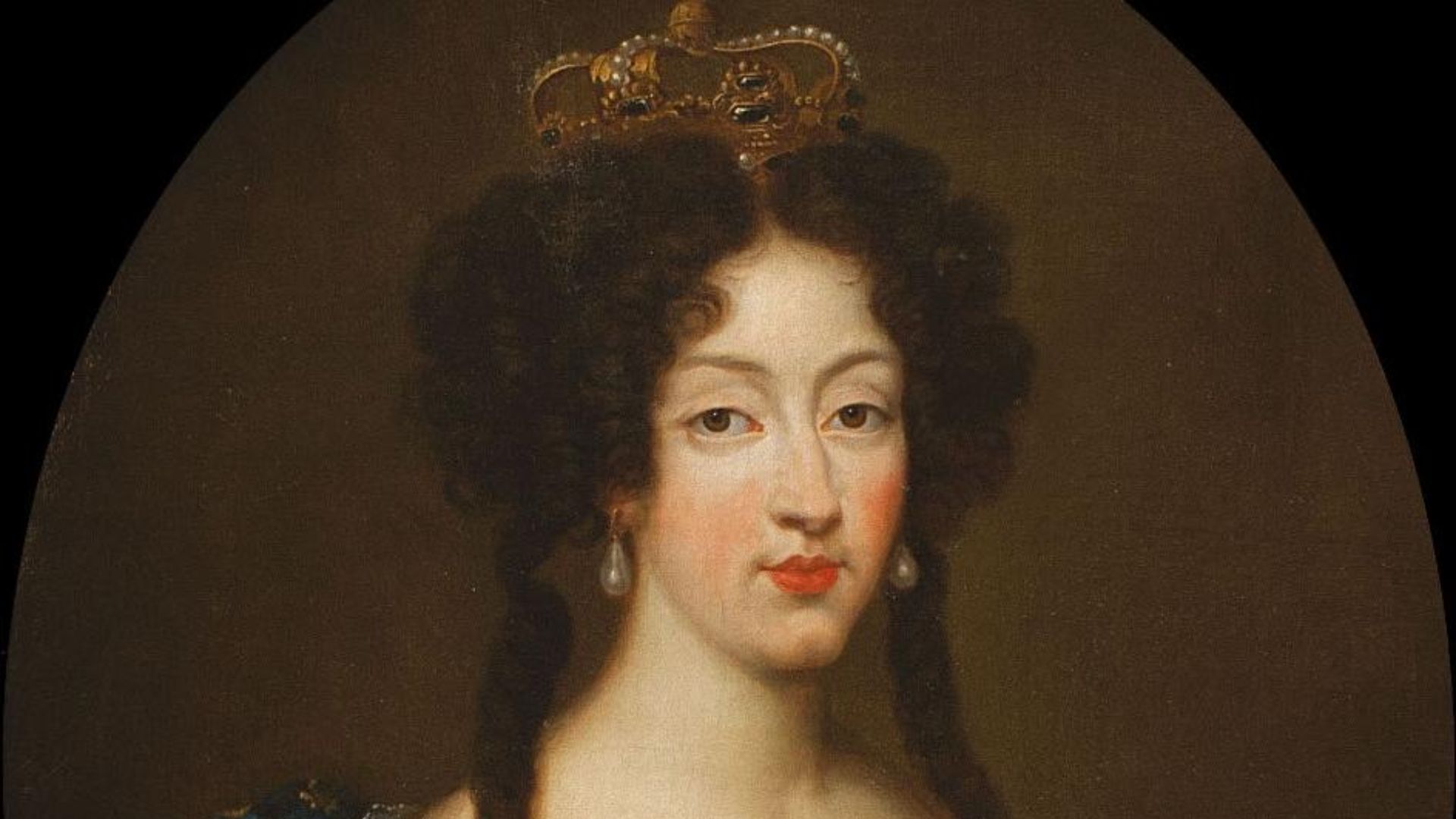 Pierre Mignard I, Wikimedia Commons
Pierre Mignard I, Wikimedia Commons
19. His Wife Was Confused
Charles’s young queen once confessed to a French ambassador that, “she was really not a virgin any longer, but that as far as she could figure things, she believed she would never have children,” indicating that whatever was happening behind bedroom doors with Charles, it likely didn’t feel hopeful to her. One thing is certain, however: After nine years, the pair still didn’t have children.
So Marie Louise pushed herself to the limit.
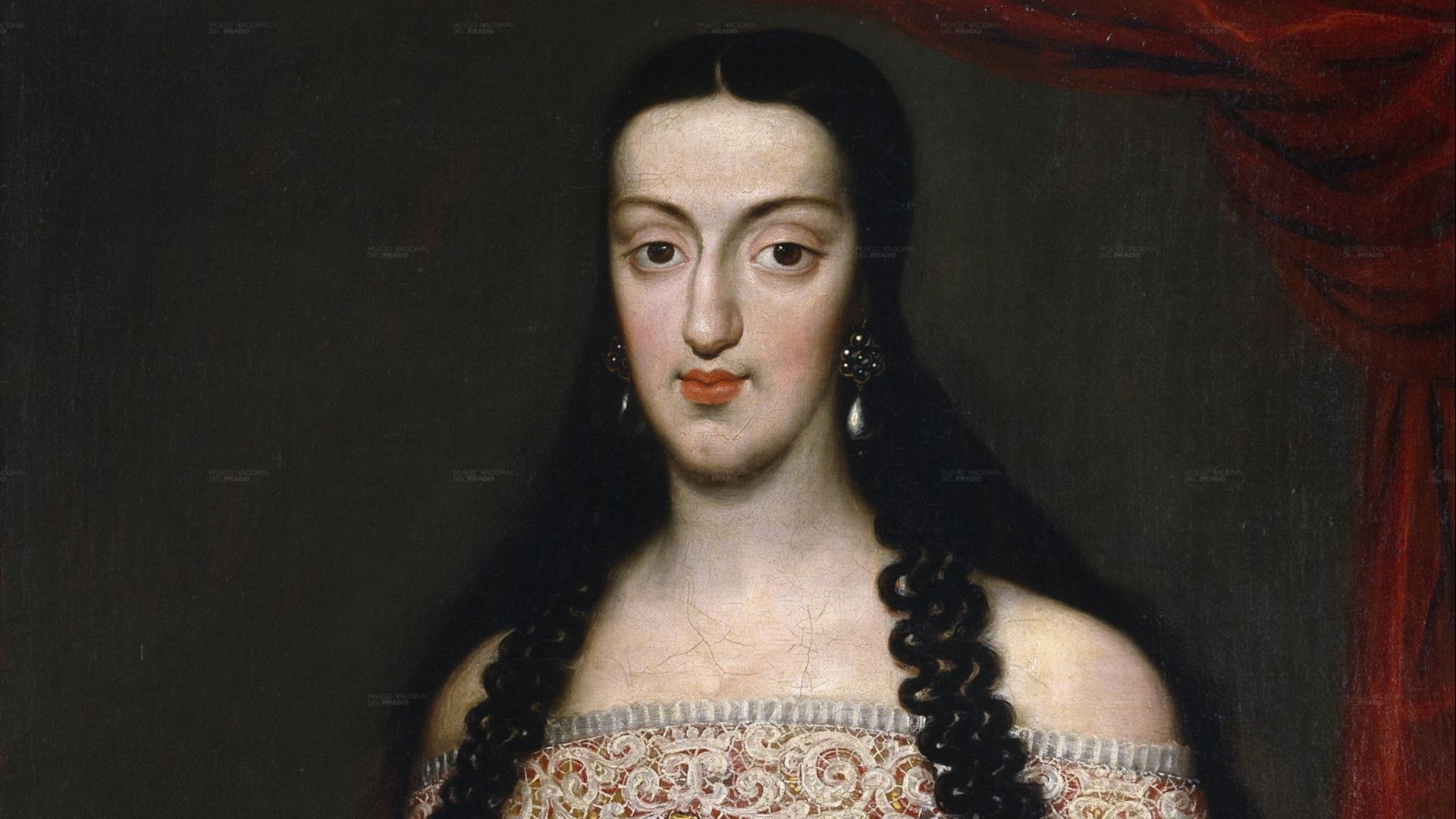 Jose Garcia Hidalgo, Wikimedia Commons
Jose Garcia Hidalgo, Wikimedia Commons
20. His Wife Hurt Herself
At the time, most people within and without the court blamed Marie Louise for infertility rather than pointing the finger at Charles. In response, she began a fertility regime full of dangerous substances thought to “help” her body carry a baby, but which did nothing but give her intestinal issues. Unfortunately, worse was to come.
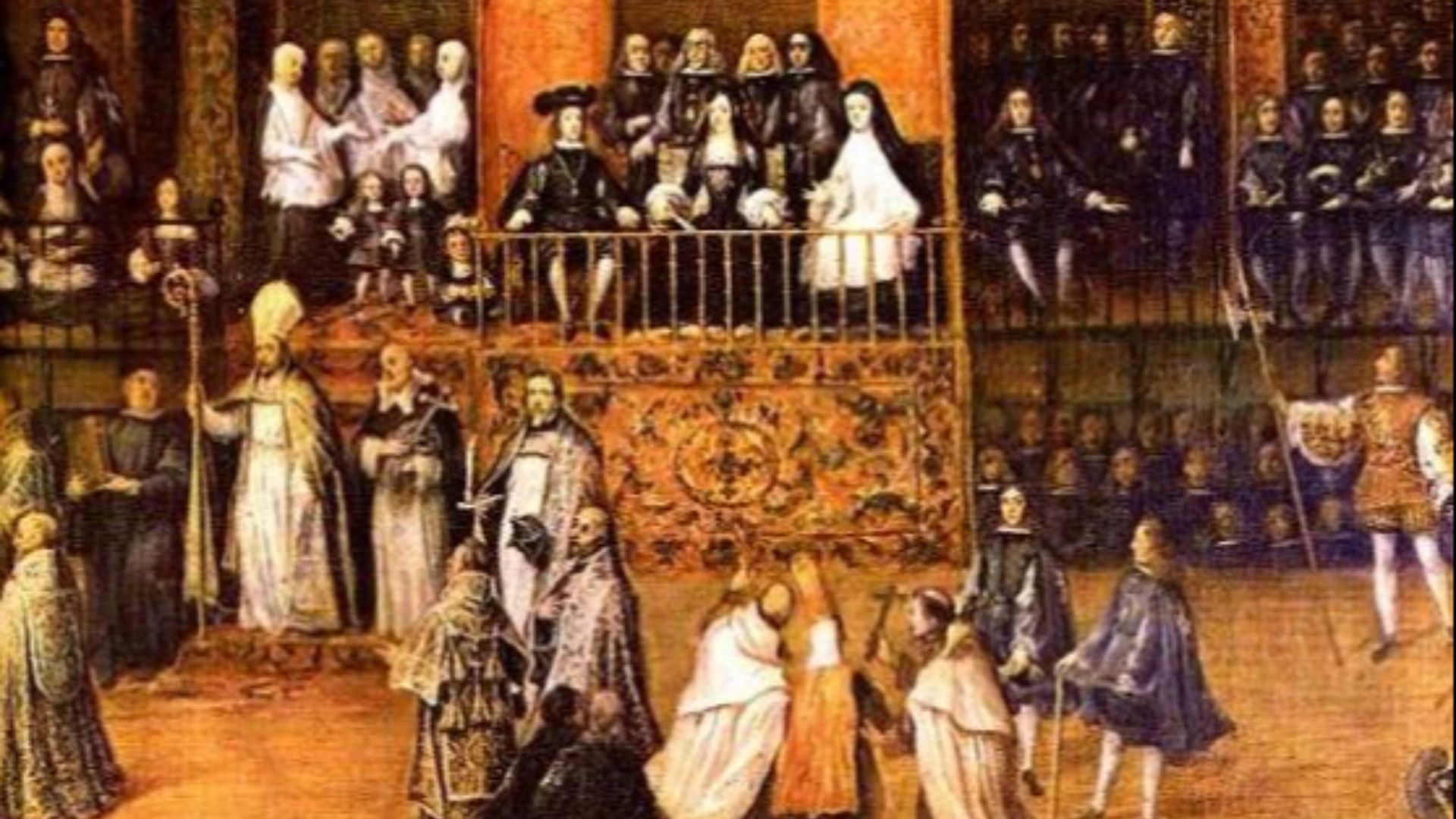 DanyMountbatten, Wikimedia Commons
DanyMountbatten, Wikimedia Commons
21. Her Health Declined
By the end of their first decade together, time was ravaging the royal couple. While Charles still battled with various ailments, Marie Louise struggled with her self worth in the face of her “barren” womb, and gained weight after developing a penchant for sugary drinks.
Not that it would matter. She wouldn’t live to see her 10th anniversary.
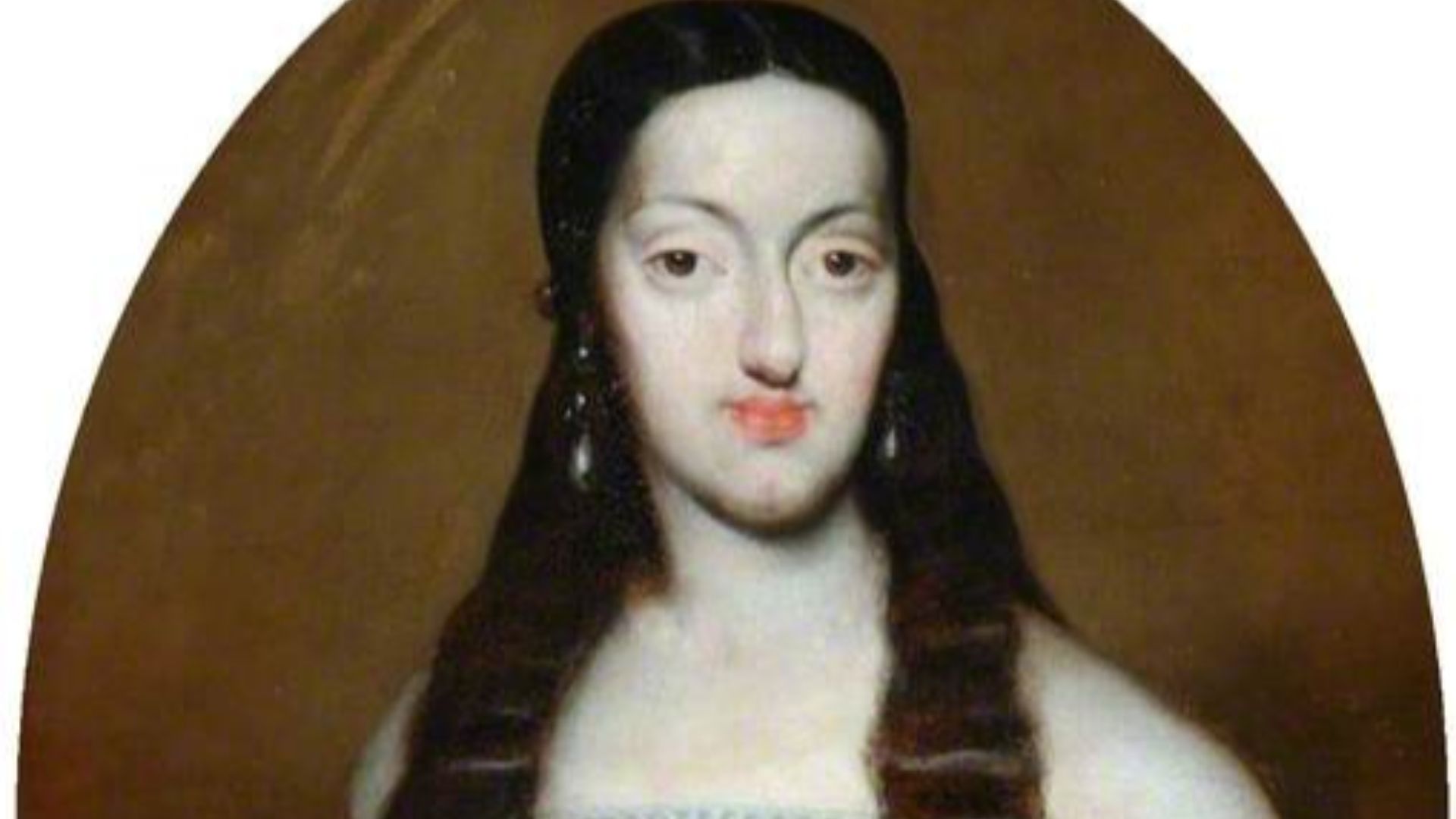 Francisco Ignacio Ruiz de la Iglesia, Wikimedia Commons
Francisco Ignacio Ruiz de la Iglesia, Wikimedia Commons
22. His Queen Met A Gruesome End
In February of 1689, nine years into her marriage with Charles, Marie Louise was out riding when she experienced a vicious pain in her abdomen, then went through a bout of convulsions and vomiting. Doctors quickly realized she was on her deathbed, and Charles rushed to her side. Reportedly, her last words were for him before dying: “Many women may be with His Majesty, but none will love him more than I do”.
Yet it may have been Charles and his court’s expectations that killed her.
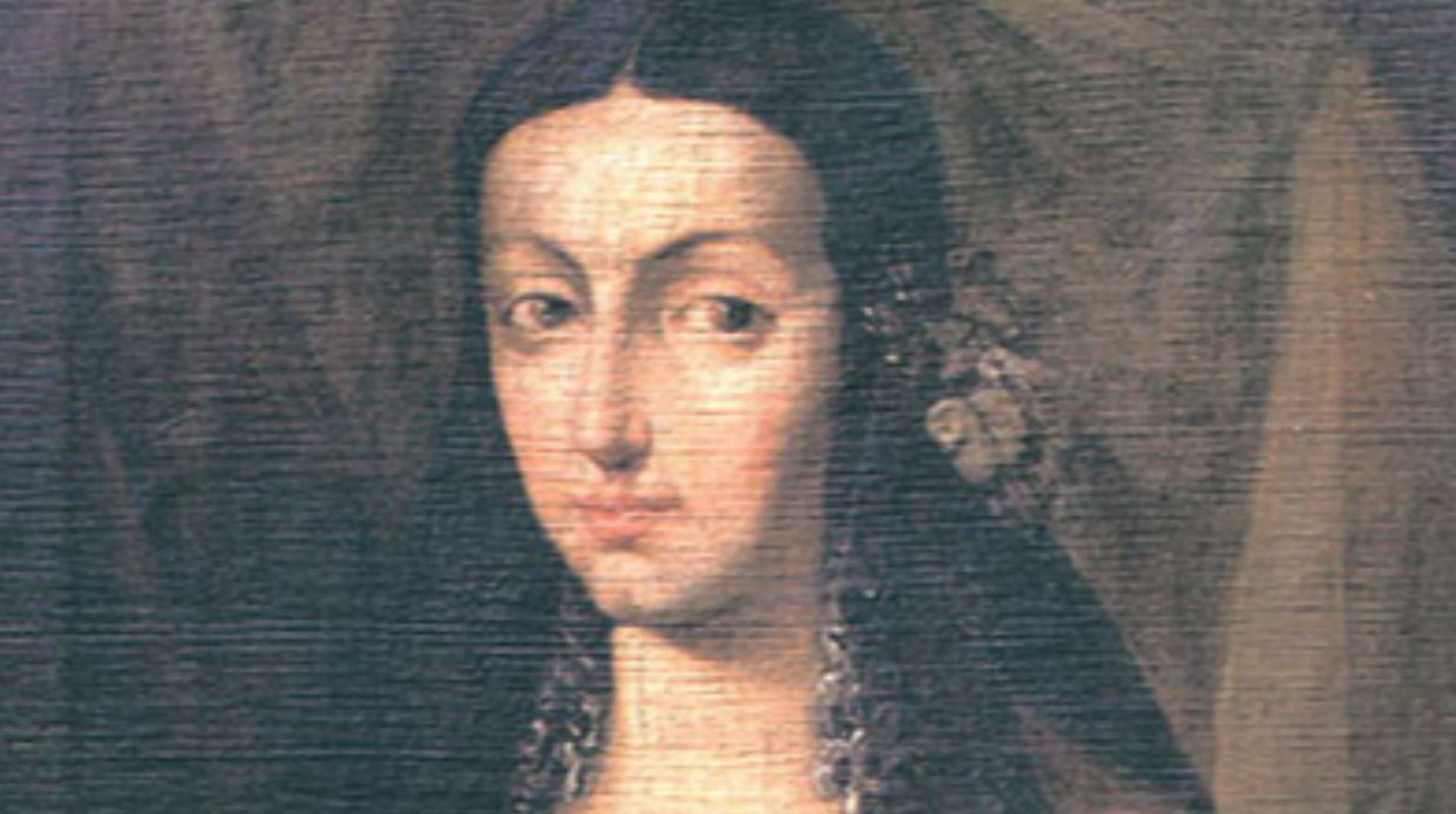 Sebastian Munoz (1650-1690), Wikimedia Commons
Sebastian Munoz (1650-1690), Wikimedia Commons
23. She Lost Her Life For Him
The Kingdom of Spain had enough enemies and so few heirs that some believed Marie Louise had been poisoned, thus ushering the realm closer to destruction. The truth is more tragic. Given her symptoms, historians are almost certain that Marie Louise perished from appendicitis, a condition that her endless fertility treatments may have exacerbated.
Her end put the Crown into panic mode.
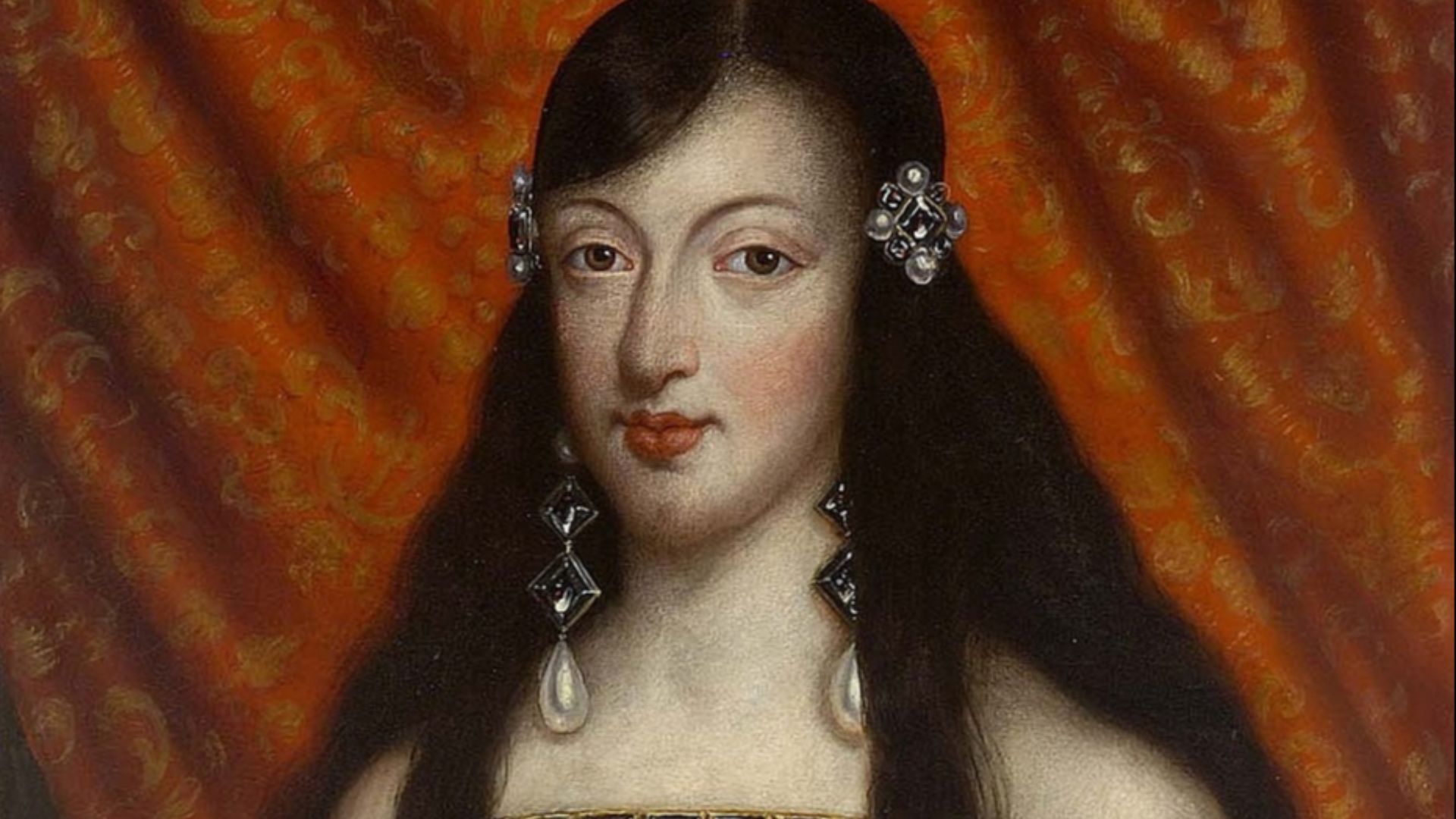 Unidentified painter, Wikimedia Commons
Unidentified painter, Wikimedia Commons
24. His Mother Chose His Second Queen
Just weeks after his old queen’s passing, Charles’s mother selected a new bachelorette for her son: Maria Anna of Neuburg. In this choice, she selected from the Austrian side of their alliances and snubbed the French, who had turned into rivals in recent years. Indeed, Maria Anna was chosen for her particular hatred of France—but it wasn’t the only quality she brought with her.
25. His Family Got Desperate
By now, Spain was desperate for a son, and Maria Anna had a secret weapon. With a mind-boggling 16 siblings to her name, she came from an enormously fertile line. Plus, just 22 years old on the day of their proxy wedding in August of 1689, Maria Anna seemed to have not only the equipment but also the time to finally provide the Spanish crown with an heir.
They just weren’t expecting her to be cunning.
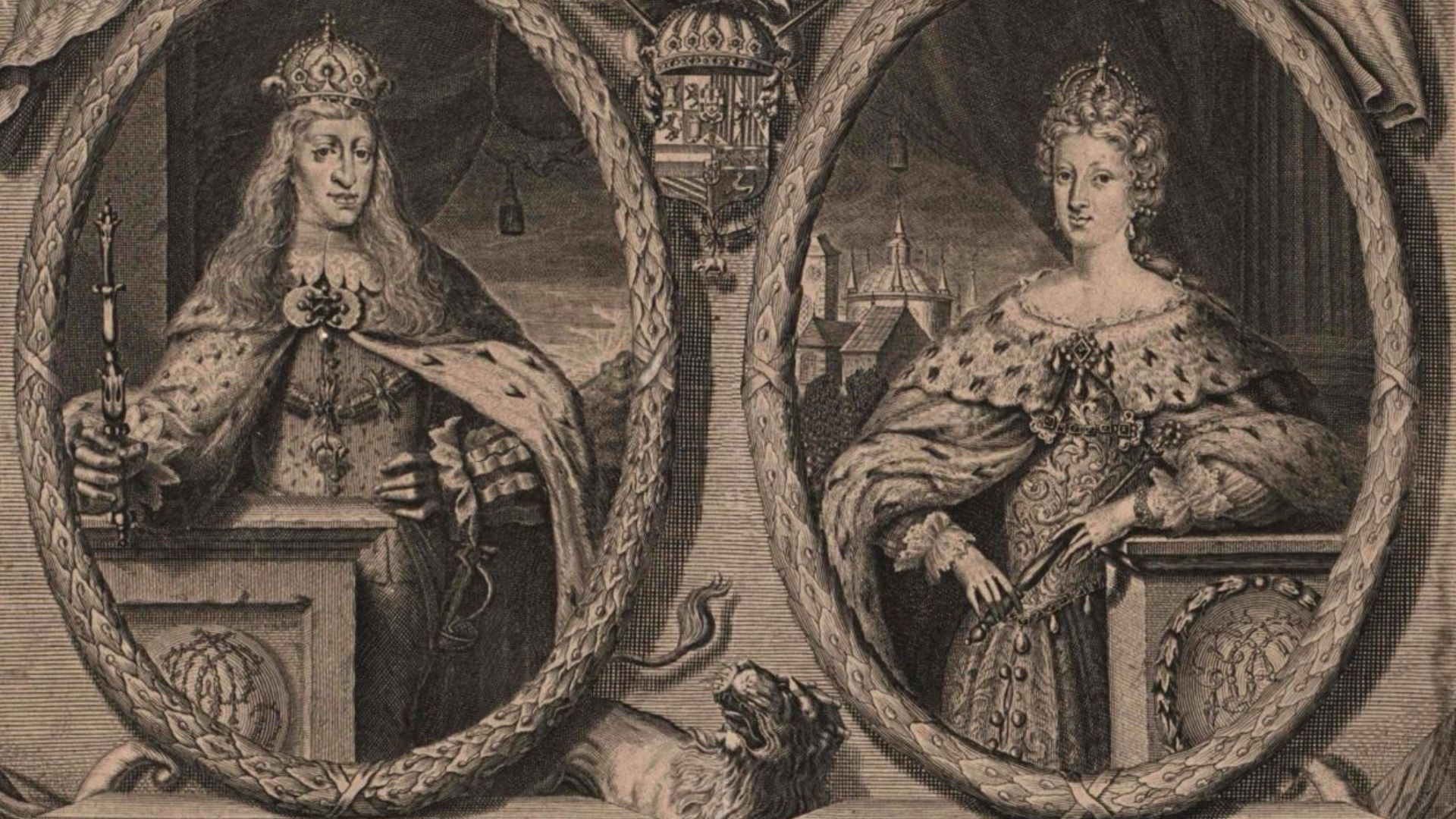 Unknown artistUnknown artist, Wikimedia Commons
Unknown artistUnknown artist, Wikimedia Commons
26. His New Wife Was Clever
Maria Anna knew she was a Hail Mary, and she was also no doubt aware of her poor, “barren” predecessor Marie Louise. So, to stave off rumors about her own fertility, Maria Anna frequently, and publicly, claimed she was pregnant. Even when no child materialized, this nonetheless seemed enough to push more of the blame onto Charles.
Then Maria Anna went the extra mile.
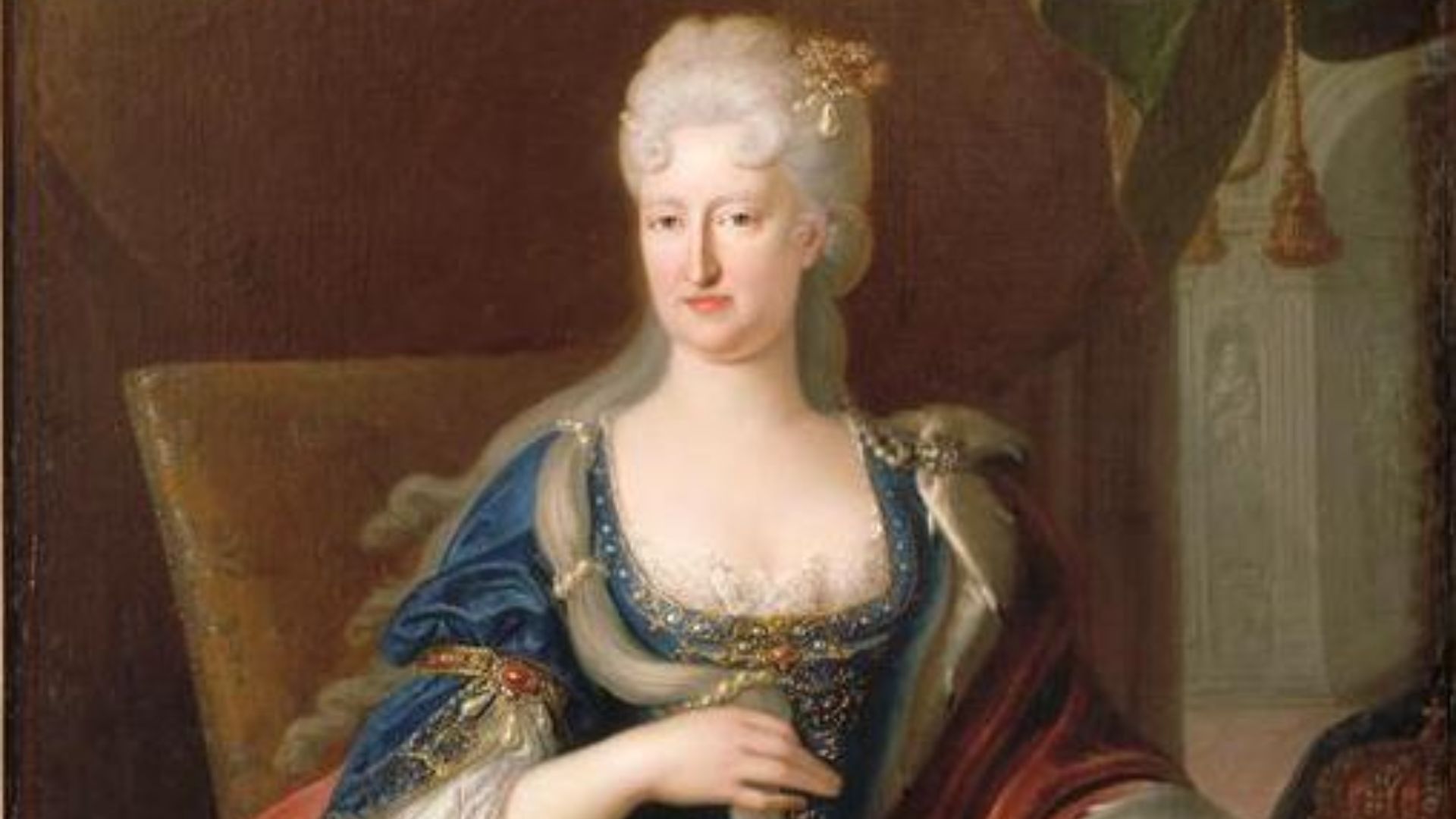 Robert Gabriel Gence, Wikimedia Commons
Robert Gabriel Gence, Wikimedia Commons
27. She Turned The Tables On Him
Throughout her marriage to Charles, Maria Anna lovingly encouraged her husband to seek fertility treatments of his own, thus further shutting down the idea that she—with her 16 siblings—was the one who was the problem. This was especially helpful when it became clear that the second time wasn’t the charm, and no child was imminent.
Maria Anna was more right about Charles than she would have even believed, but it hardly helped what was to come.
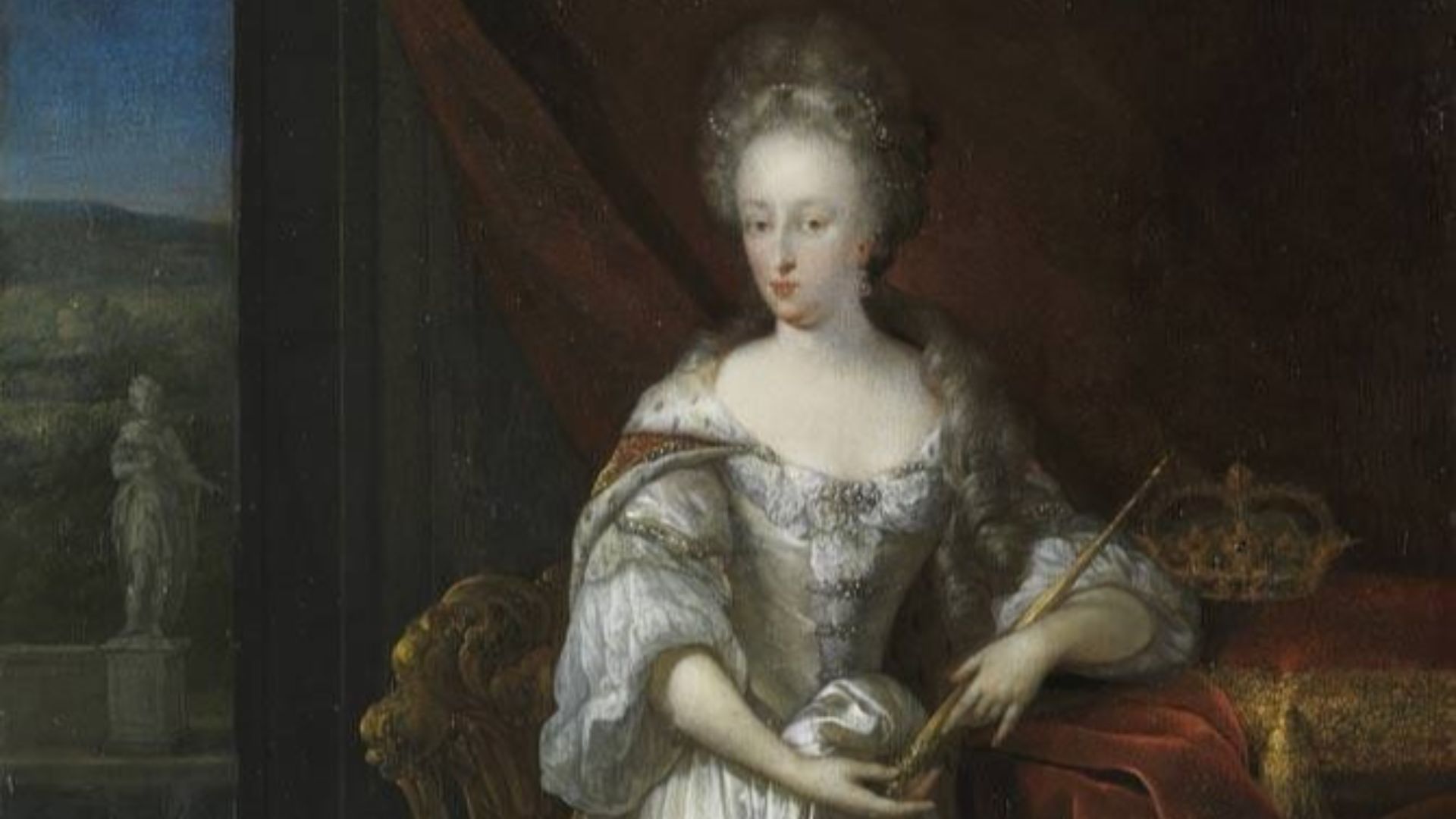 Eglon van der Neer, Wikimedia Commons
Eglon van der Neer, Wikimedia Commons
28. His Realm Fell Apart
As Charles’s childless second marriage went on, more and more problems came for the throne: In 1690, Spain entered the Nine Years’ War with France and its European allies. This proved an utter disaster. Just two years in, they had to declare bankruptcy, and four years later, in 1696, they had lost almost all of Catalonia to the French.
Soon, people began to notice just how bad it was.
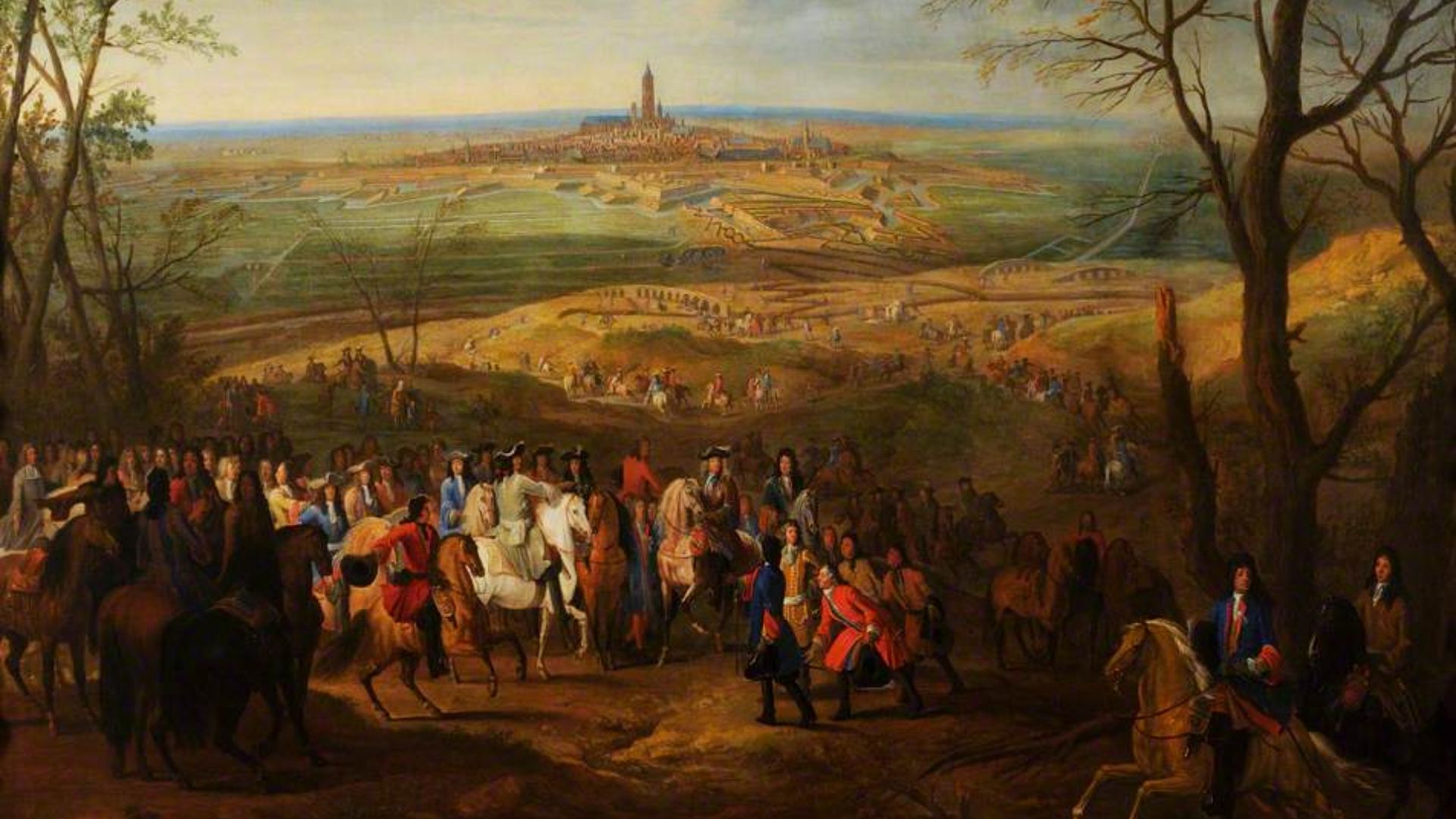 Jean-Baptiste Martin the elder, Wikimedia Commons
Jean-Baptiste Martin the elder, Wikimedia Commons
29. He Was An Anomaly
In 1691, a year after Spain entered the Nine Years War, a foreign ambassador visited King Charles II’s court and was appalled at what he saw. From the ailing king to the childless marriage to the disastrous war effort, the ambassador admitted, "it is incomprehensible how this monarchy survives”.
It wasn’t the only way the Nine Years War was cataclysmic.
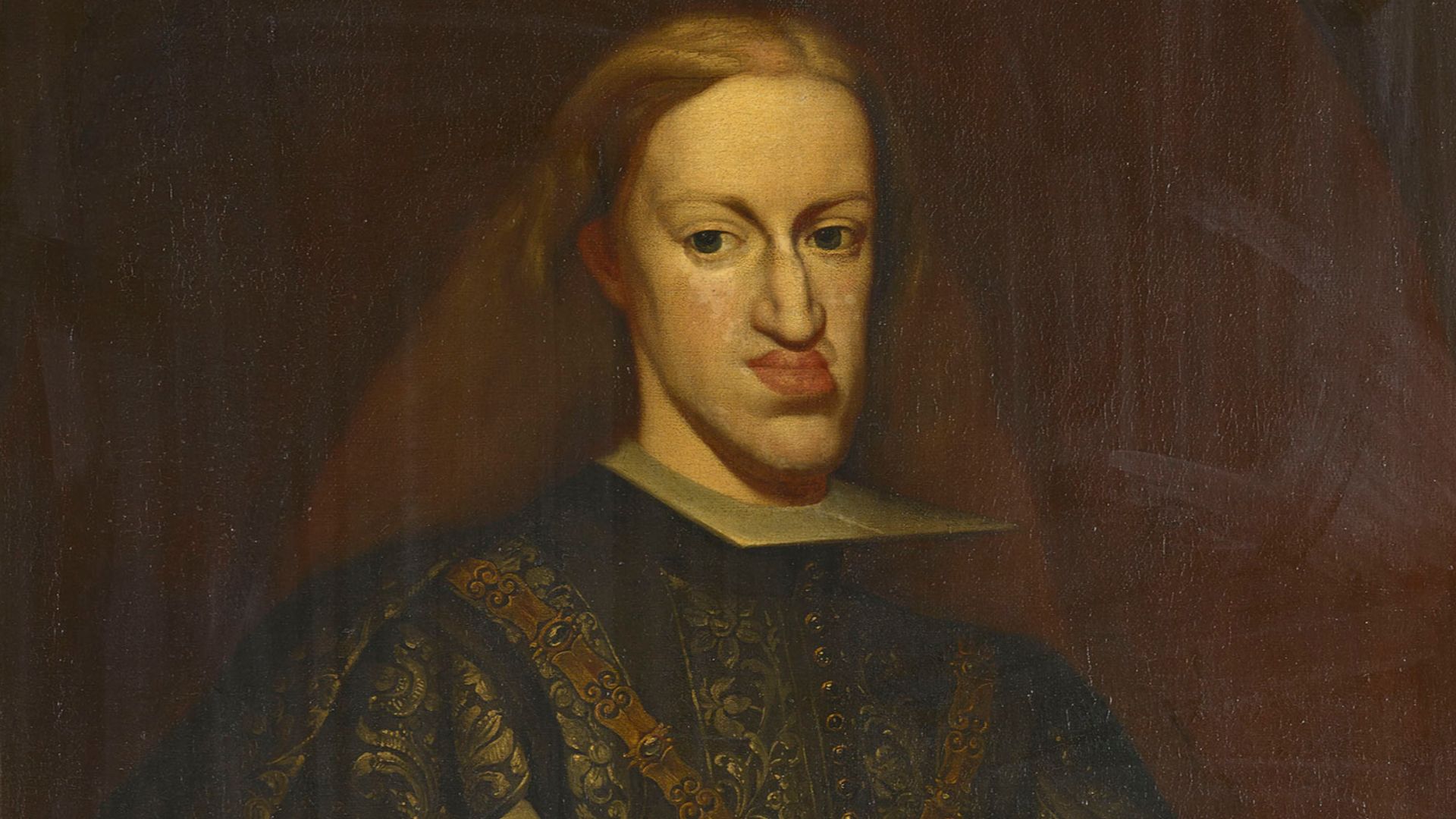 Claudio Coello, Wikimedia Commons
Claudio Coello, Wikimedia Commons
30. He Was At The Center Of A Crisis
Part of the reason the Nine Years War started in the first place was because of Charles—namely, because of his inability to both stay healthy and to produce an heir. All the powers in Europe were wound tighter than springs, knowing that if Charles passed without a son to inherit his enormous kingdom, it would throw off the power balance on the continent and spark a succession crisis.
No one was happy about the situation, but Charles was about to suffer an incredibly personal blow.
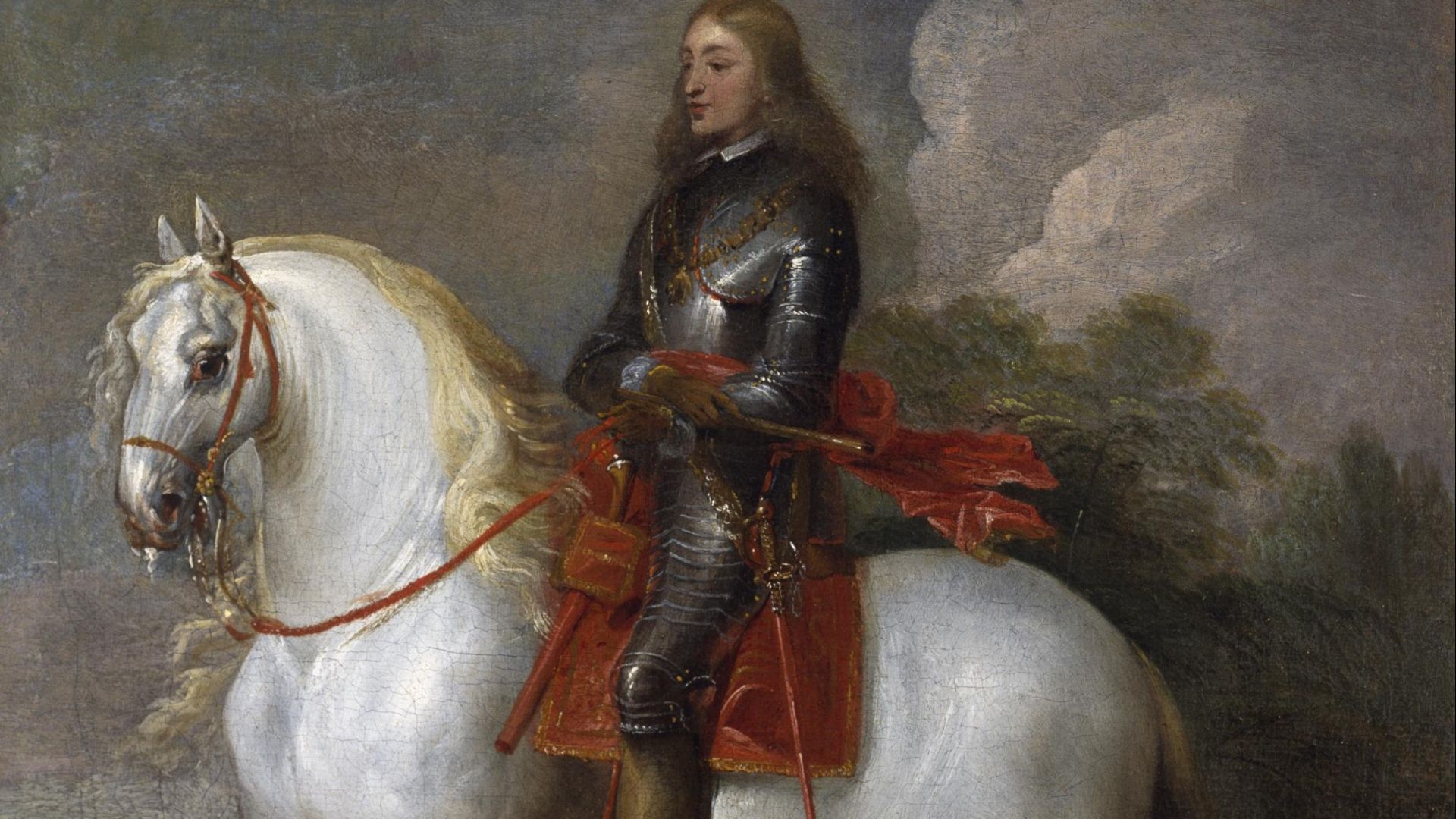 Unknown Flemish, Wikimedia Commons
Unknown Flemish, Wikimedia Commons
31. He Lost His Guiding Light
In 1696, the same year Spain lost most of Catalonia, Charles also lost his mother Mariana. The 61-year-old had likely perished from breast cancer, and her passing deprived the Spanish court of one of its stabilizing forces—she had been a significant figure in Charles’s government since before he could walk without leg braces. That government didn’t hold together long.
32. His Wife Took Over
In the wake of his mother’s passing, Charles might have stepped up and taken more of his power back. Instead, he stepped aside, and it was his wife Maria Anna who rose to prominence in the power vacuum. Soon, she was running the court’s political factions just like her mother-in-law had—and she did it with one goal in mind.
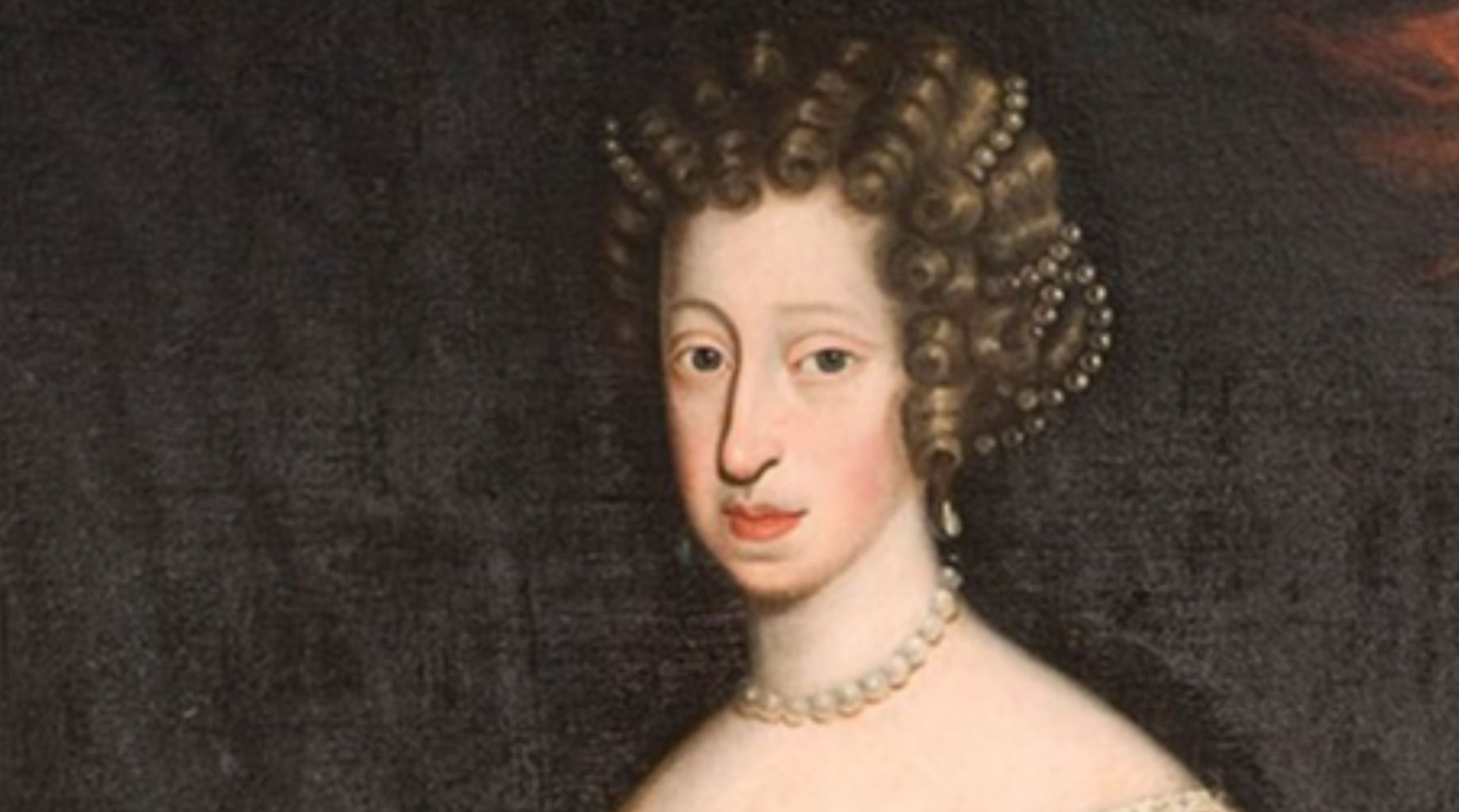 School of Pierre Mignard I, Wikimedia Commons
School of Pierre Mignard I, Wikimedia Commons
33. His Court Was At War
Both Charles’s late mother and his second wife were staunch supporters of the “Austrian faction” in the Spanish Court, and vehemently opposed the still-active “French faction”. Both sides fought over all manner of influence, but their biggest goal was also the most existential one: To control who became Charles’s successor, an Austrian candidate or a French one.
As Charles’s health continued to decline without a son in sight, Maria Anna had to put all her cunning into overdrive.
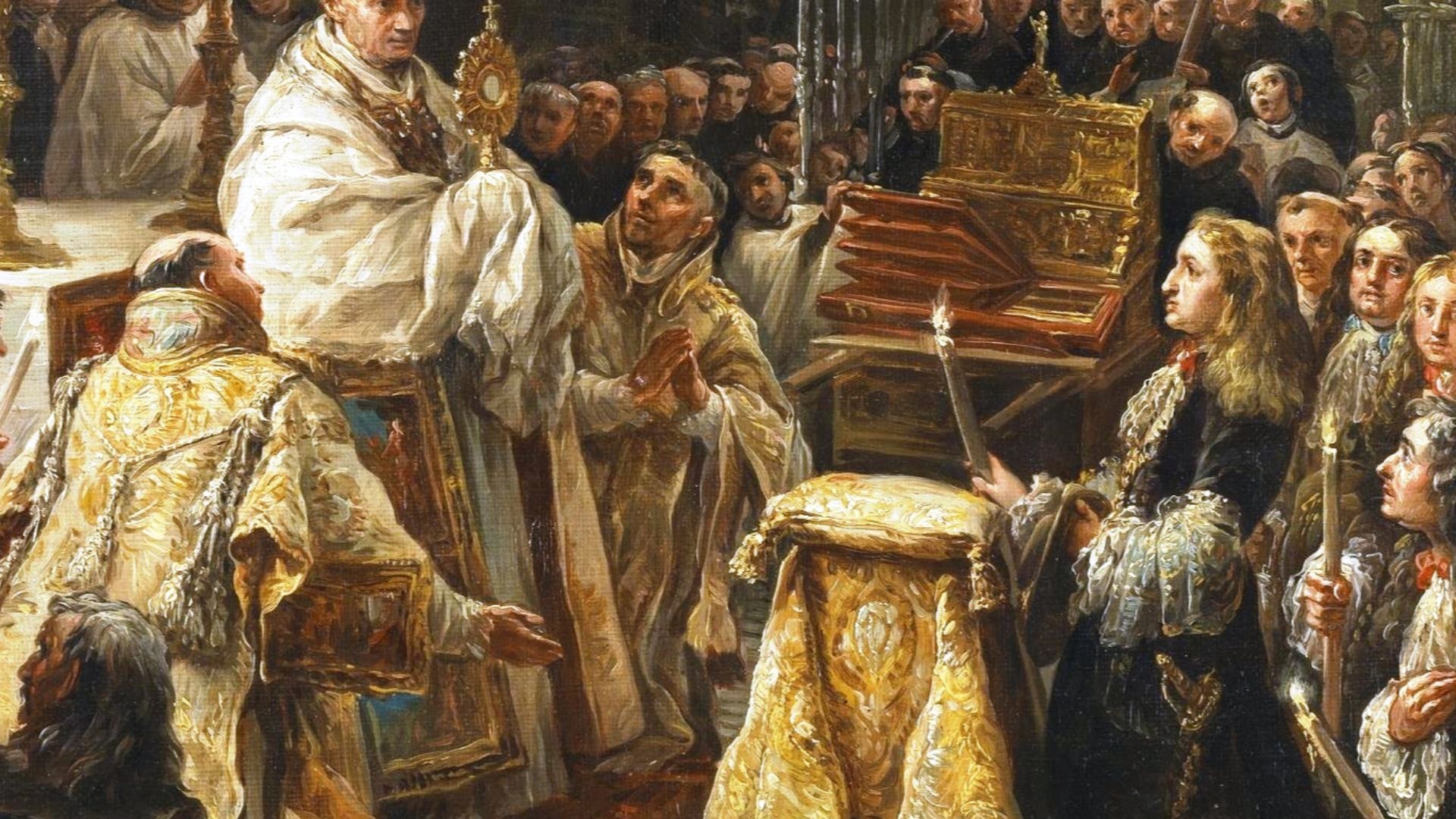 Vicente López Portaña, Wikimedia Commons
Vicente López Portaña, Wikimedia Commons
34. He Chose An Heir
In 1698, two years after his mother’s demise, Charles fell terrifyingly ill. With the Grim Reaper lying in wait, Spain went into fierce, urgent talks with the rest of the European powers to give Charles an official successor and hopefully avoid all-out conflict when the end finally came. They emerged with good news…for his wife Maria Anna, at least.
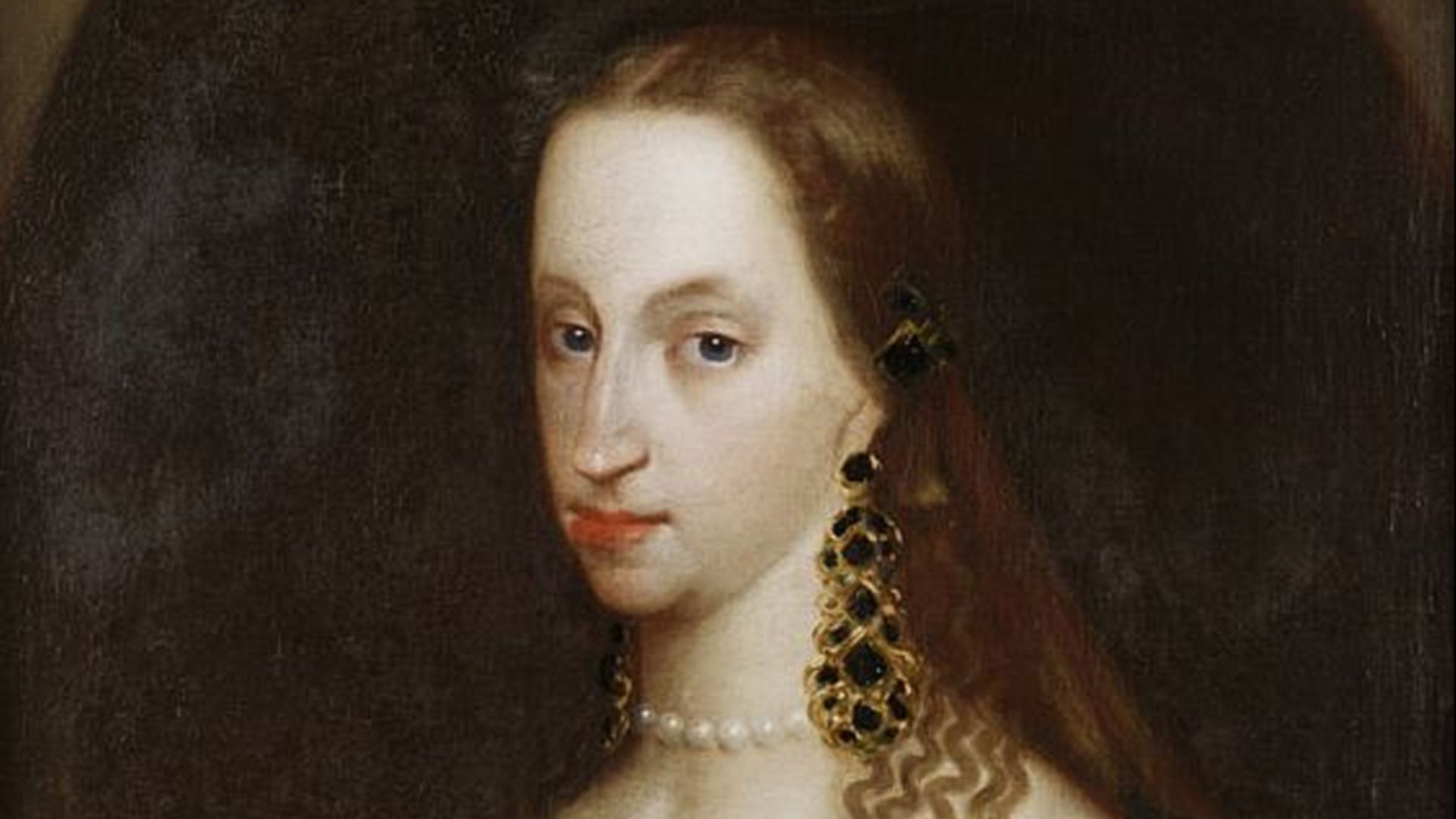 Attributed to Claudio Coello, Wikimedia Commons
Attributed to Claudio Coello, Wikimedia Commons
35. His Wife Wielded Immense Influence
When the talks ended, Charles was ready to name Joseph Ferdinand of Bavaria as his successor, a coup for both Maria Anna and the Austrian faction at court. In fact, Maria Anna had reason to be very pleased with the result; she and young Joseph were actually from the same noble house. And that was just the beginning of Maria Anna’s victory.
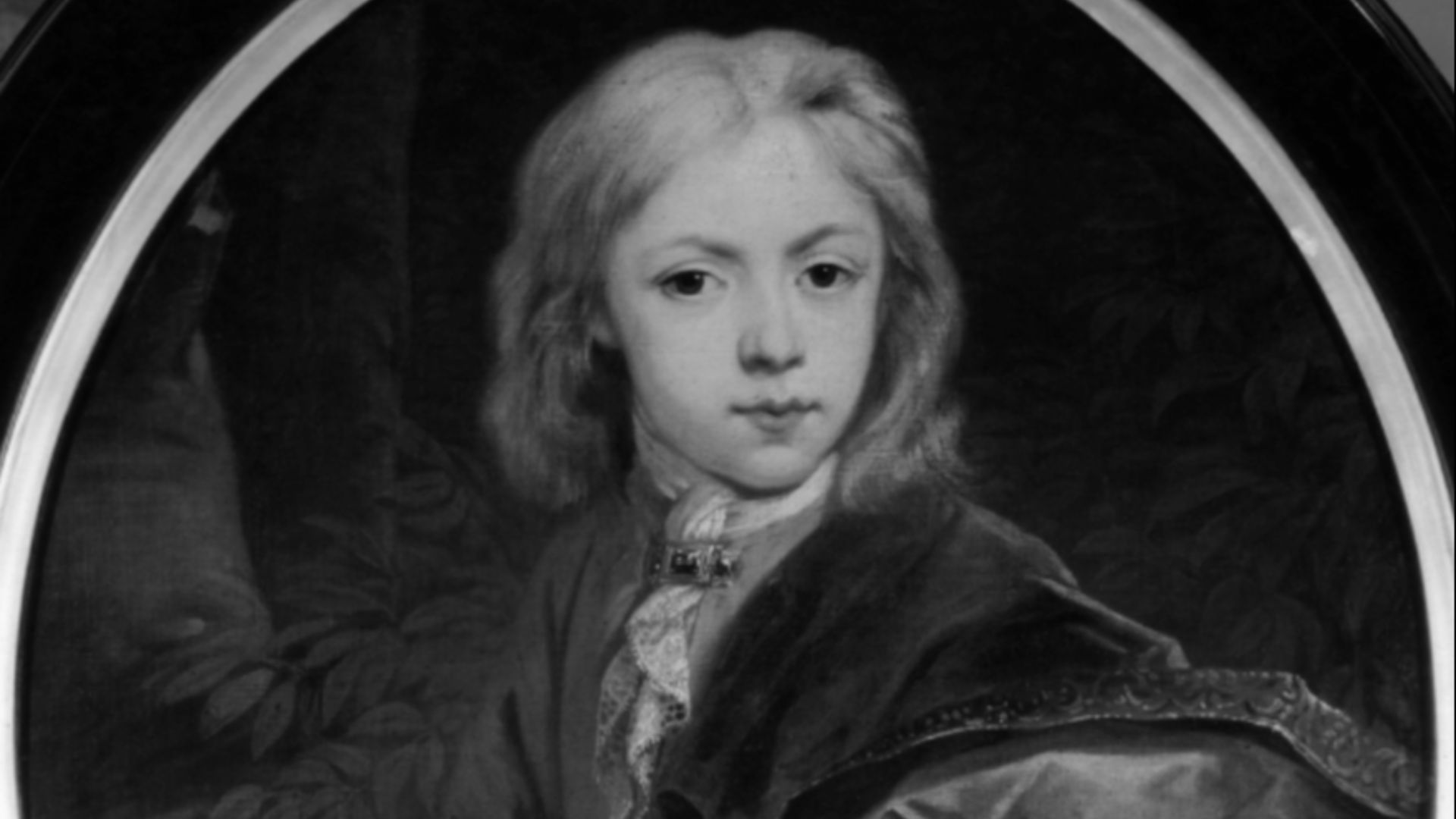 Augustin Coppens, Wikimedia Commons
Augustin Coppens, Wikimedia Commons
36. He Gave His Wife More Power
When Charles officially published his will that November, he didn’t just name Joseph Ferdinand as his successor, he also appointed Maria Anna as regent for the boy should he come to power while still a minor, giving his wife a vote of confidence he never seemed to give himself. But the course of royal power dynamics never did run smoothly.
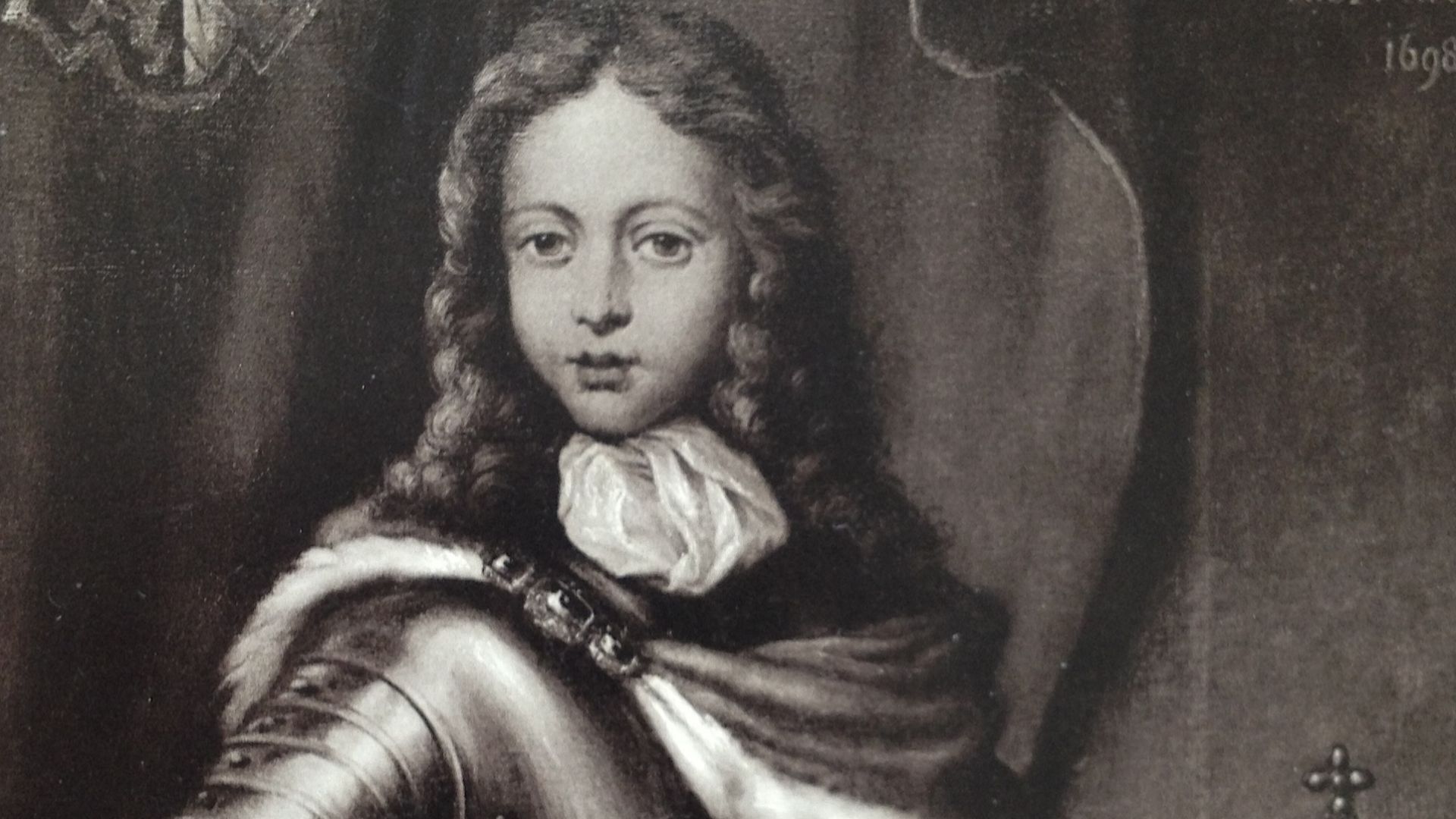 D. Fuchsberger, Wikimedia Commons
D. Fuchsberger, Wikimedia Commons
37. His Countrymen Hated His Queen
Charles’s Will was supposed to stabilize the Kingdom of Spain, but it only threw it into further turmoil. When Charles’s court heard that he was making his wife regent, their reaction was chilling. Reportedly, his Spanish councillors took the news in complete silence, an “I don’t know her” move that nobody could mistake for kindness.
Charles, meanwhile, was fighting his own battles.
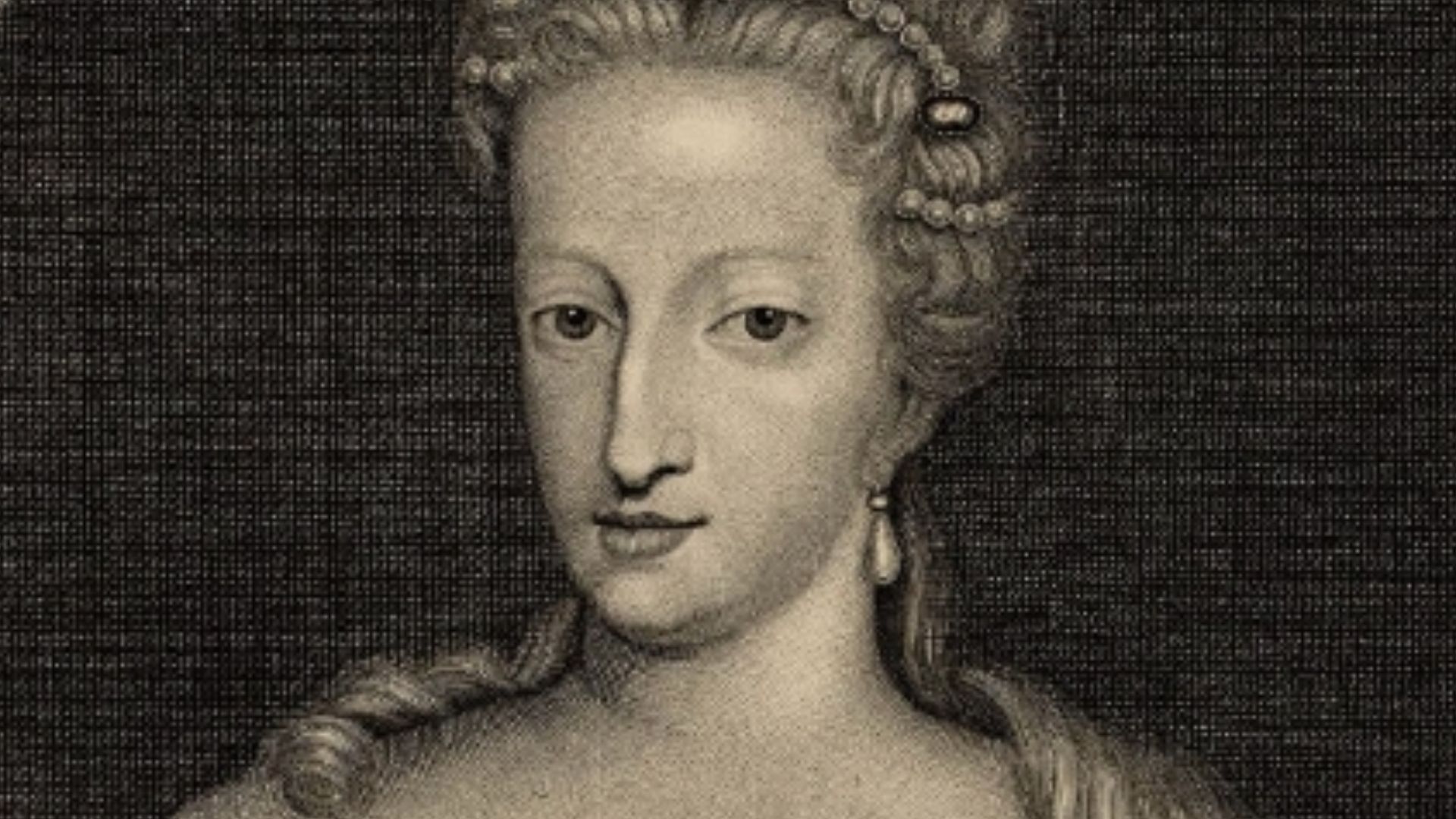 Pieter van Gunst, Wikimedia Commons
Pieter van Gunst, Wikimedia Commons
38. He Wanted The Impossible
Throughout negotiations for Charles’s heir, there were pressing questions about just what his successor would inherit. Spain’s enormous acreage made it difficult to pass the kingdom along wholesale to one outsider—but while councillors sought to partition the realm in various ways, Charles II and many Spaniards were adamant the kingdom remain intact.
Everything kept ratcheting up, even as Charles kept declining. Until: catastrophe.
39. He Lost His Heir
In 1699, death brought everything back to the drawing board—and believe it or not, it wasn’t Charles II who perished. That year, Charles’s heir Joseph Ferdinand passed unexpectedly, throwing most of Europe into frantic treaties for the second time in as many years. Charles, ailing but understanding just how vital it was for him to rewrite his Will, joined right in.
Once more, his wife Maria Anna came out on top.
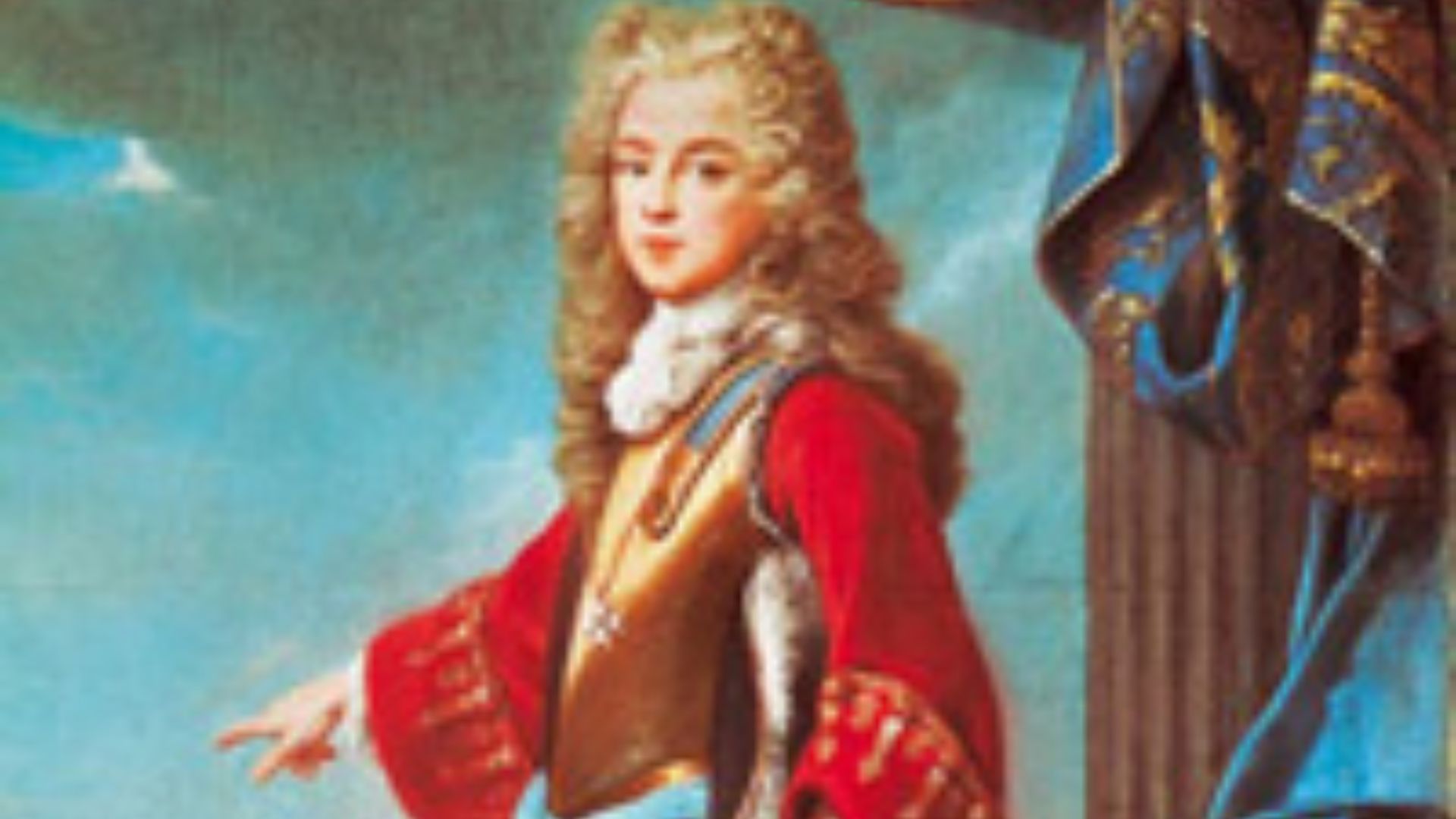 Joseph Vivien, Wikimedia Commons
Joseph Vivien, Wikimedia Commons
40. His Wife Won Again
The choice of Charles’s next successor gave Queen Maria Anna even more to crow about: The boy was none other than her nephew, Archduke Charles. Although there was still bickering about just how much of Spain Archduke Charles would get, the Austrian faction at court was overjoyed. It wouldn’t last.
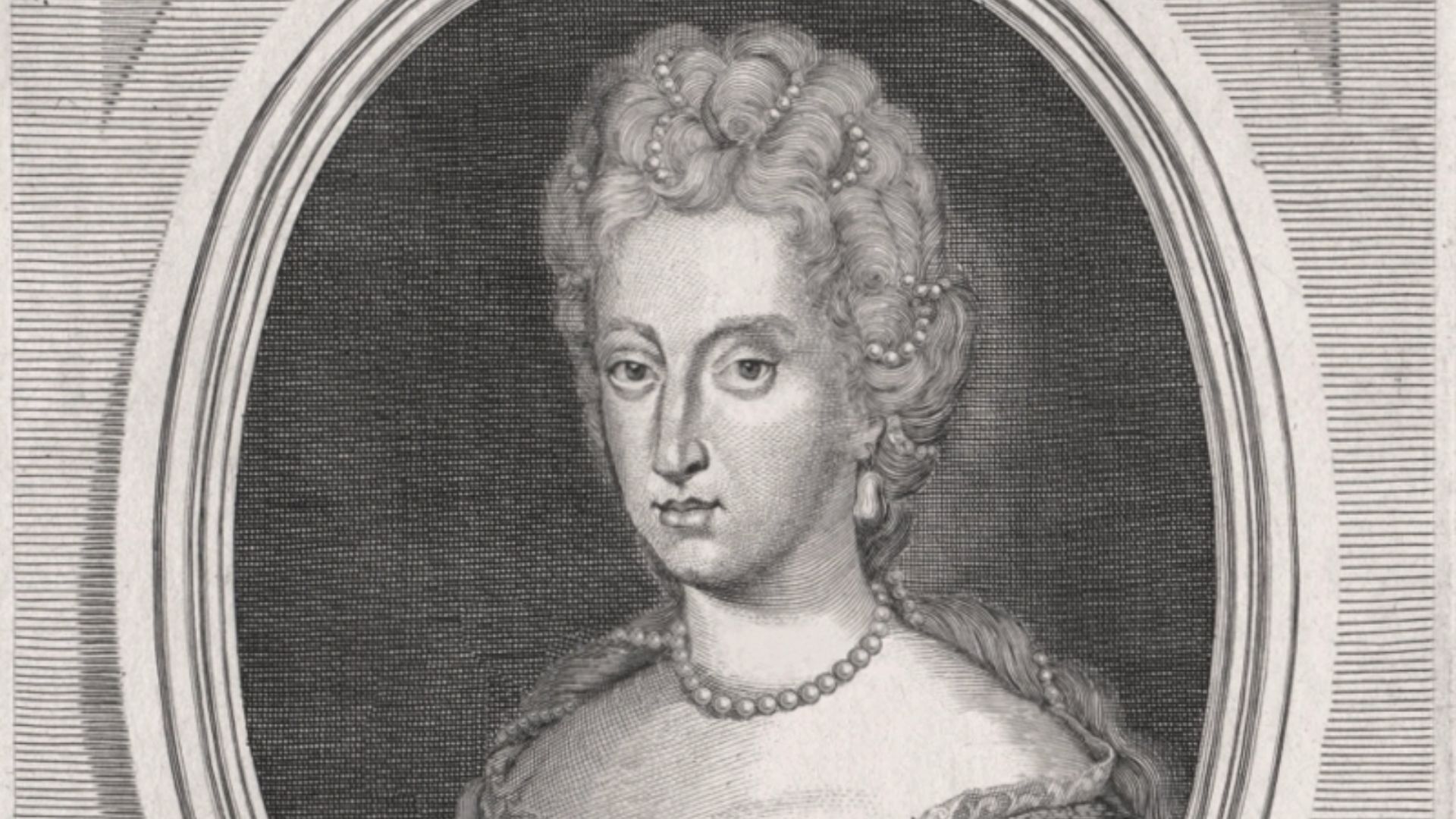 Jacques Blondeau, Wikimedia Commons
Jacques Blondeau, Wikimedia Commons
41. He Stopped Eating
In late 1700, Charles’s health took its last bad turn. The symptoms were horrifying. After a lifetime suffering stomach issues and having difficulty ingesting food, Charles grew so ill he wasn’t able to eat at all, and starting that October he began wasting away in front of everyone’s eyes. There was no more time left, and his disgruntled courtiers now made their checkmate.
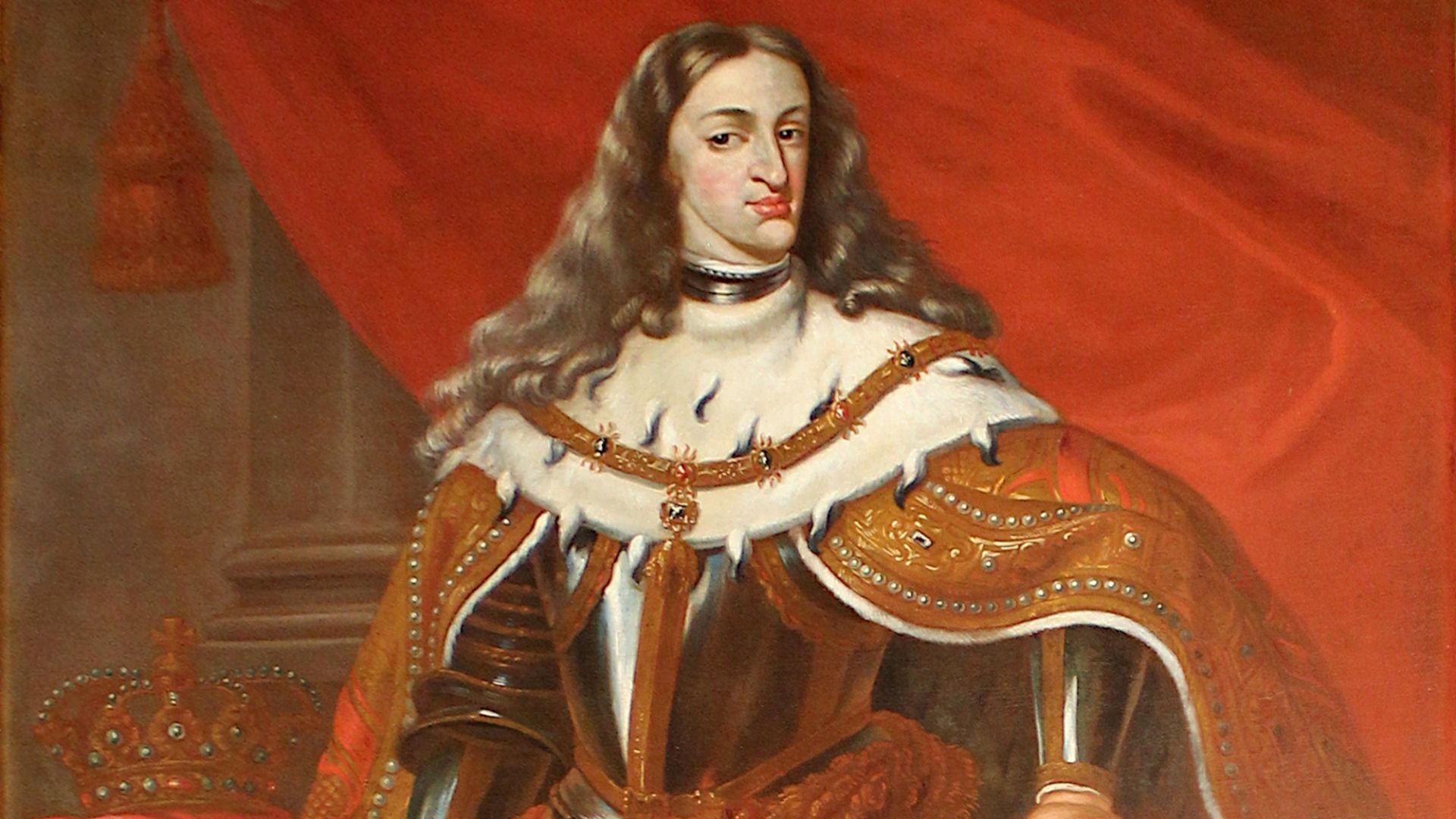 Kaho Mitsuki, Wikimedia Commons
Kaho Mitsuki, Wikimedia Commons
42. Her Enemies Pounced
Many of Charles’s Spanish courtiers, particularly the Castillians, had long despised his wife Maria Anna, and believed that a French successor rather than an Austrian one would allow Spain to keep the greater part of her lands after Charles passed.
So, they did what any power hungry courtiers would do: They approached Charles on his deathbed and pushed their agenda. To Maria Anna’s horror, it worked.
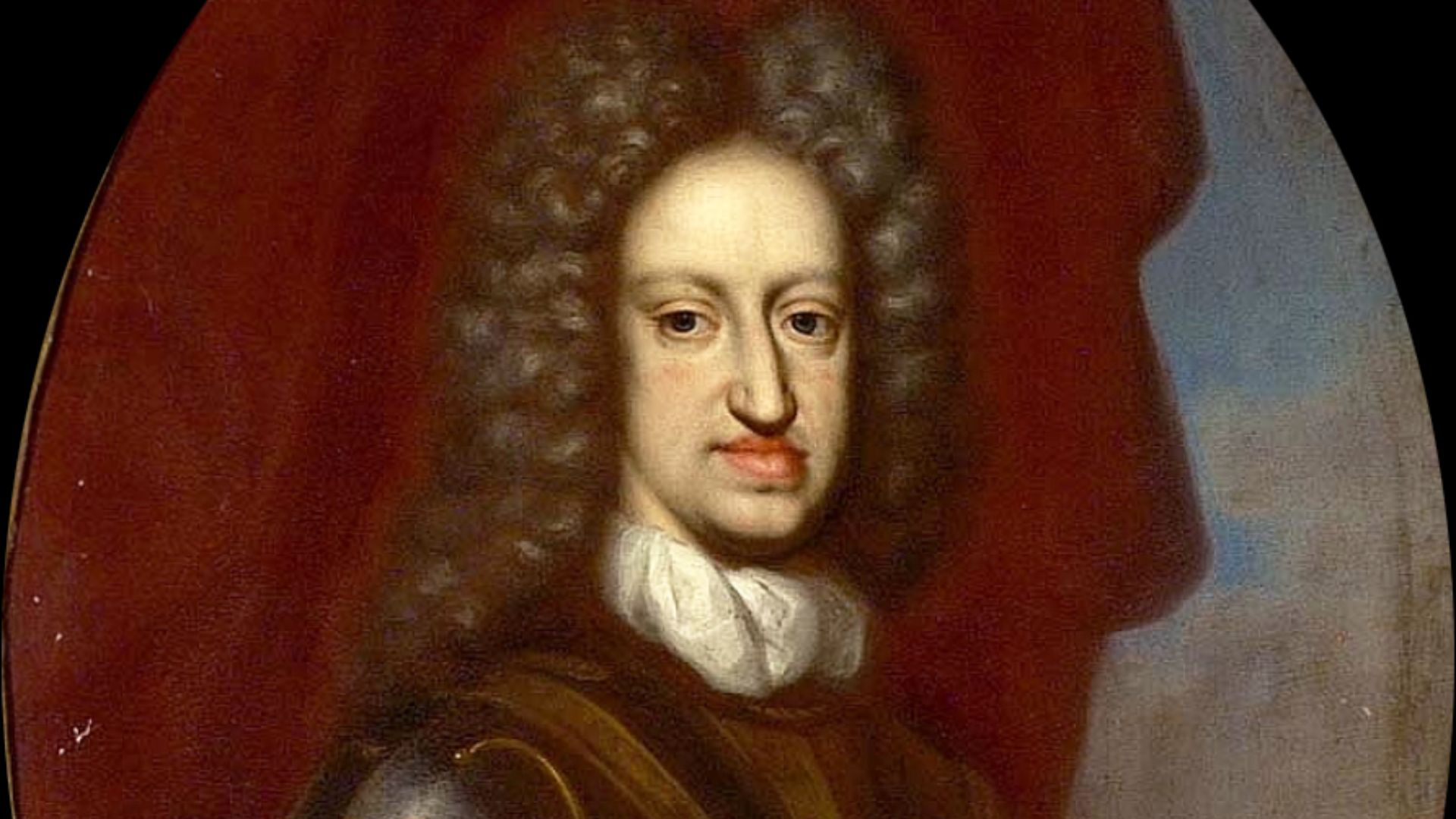 Jan Frans van Douven, Wikimedia Commons
Jan Frans van Douven, Wikimedia Commons
43. He Changed His Mind
While Maria Anna’s nephew Archduke Charles had seemed like a shoo-in for the successor role just weeks before, Charles now suddenly changed his mind. An Archbishop from the French faction successfully convinced the ailing king to appoint Philip of Anjou, the grandson of King Louis XIV, as his official heir. Maria Anna responded by going ballistic.
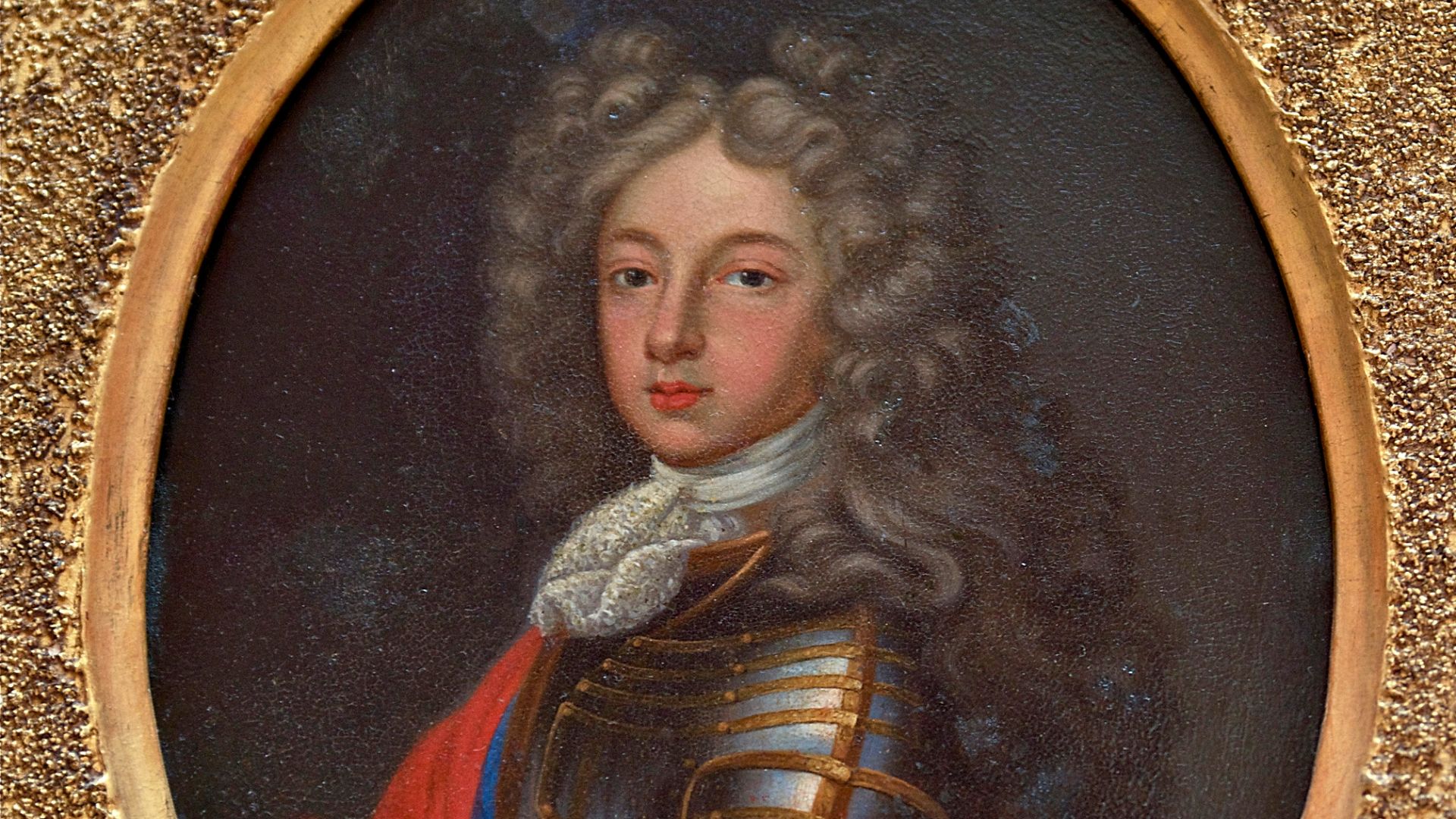 Unidentified painter, Wikimedia Commons
Unidentified painter, Wikimedia Commons
44. He Was “Bewitched”
In these last days of the Spanish Habsburg Empire, everyone knew the ship was sinking, but some were still clinging to the helm. Incensed at this switch-up, Maria Anna had her ally General Baltasar arrest the king’s personal confessor Froilan Diaz, whom she felt had helped convince Charles to go with France and thus “bewitched” the king.
But in making this accusation, Maria Anna didn’t realize she was opening Pandora's box.
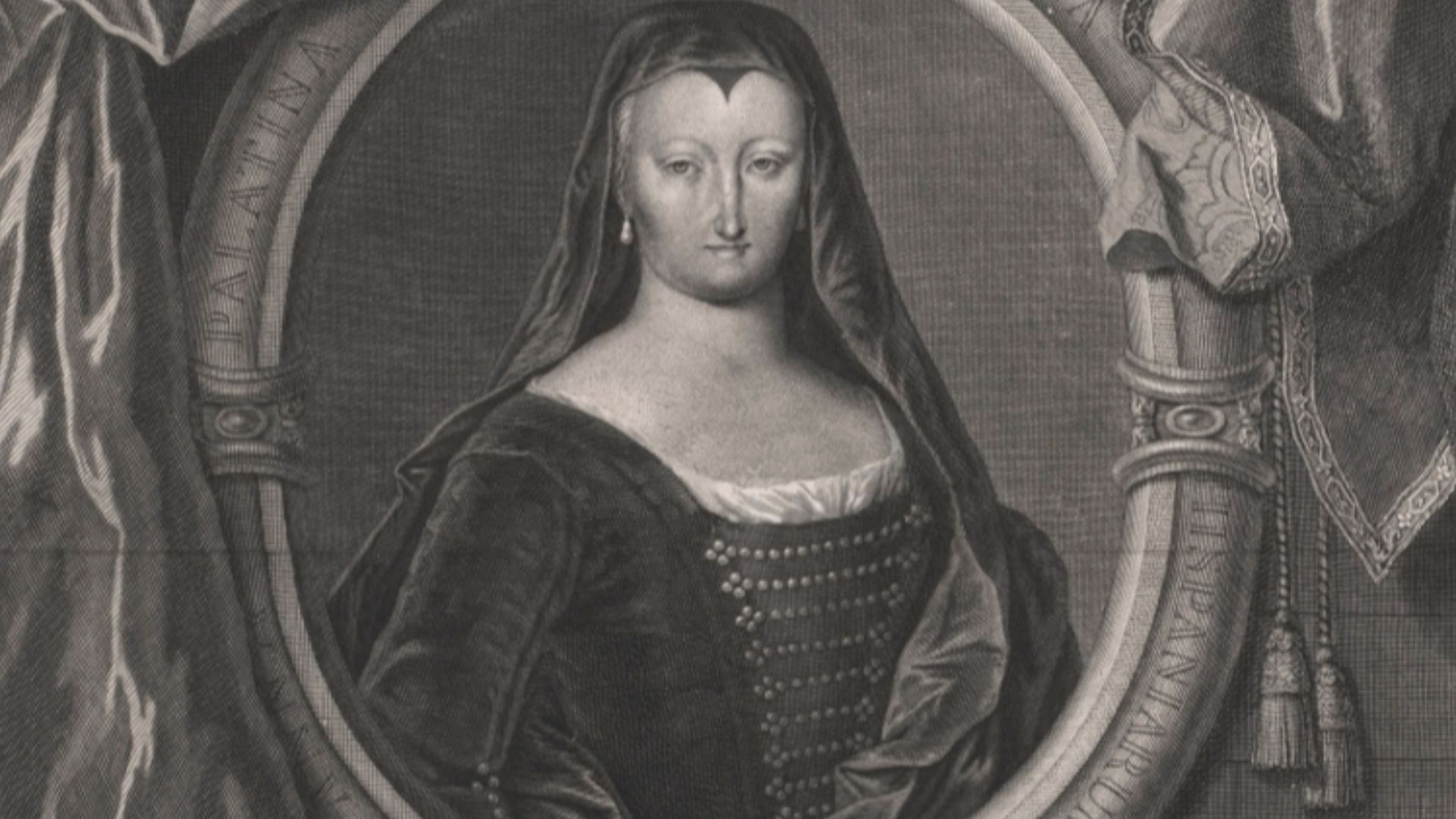 Jean-François Cars / After Robert Gabriel Gence, Wikimedia Commons
Jean-François Cars / After Robert Gabriel Gence, Wikimedia Commons
45. The Spanish Inquisition Got Involved
Maria Anna’s ally General Baltasar was a member of the infamous Spanish Inquisition, and this political arrest was the beginning of the Inquisition’s end. When Diaz emerged from the ordeal unconvicted, Baltasar—now as berserk as his queen—tried to arrest the people who acquitted Diaz, and the unhinged move permanently damaged the Inquisition’s reputation.
All this, for one little heir. But when Charles II finally did perish, it only proved how high the stakes really were.
46. His Wife Was Exiled
On the first of November 1700, just a handful of days before his 39th birthday, Charles’s beleaguered body finally gave out. It all happened very fast from there: With Maria Anna caught on the back foot, Philip of Anjou was proclaimed King of Spain, and Charles’s queen—once one of the greatest inheritors to her husband’s kingdom—was exiled to Toledo.
Then the real fighting began.
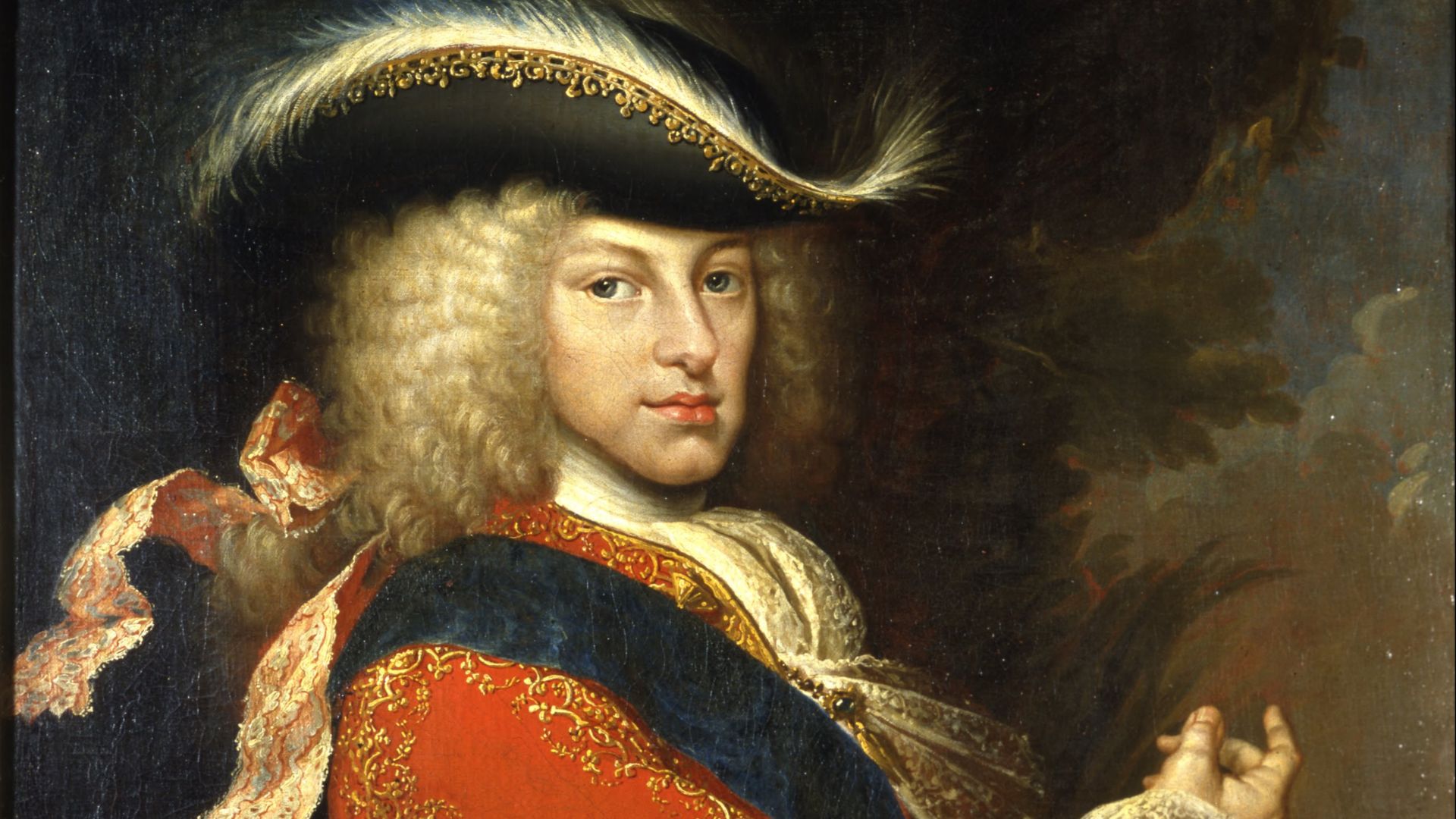 Miguel Jacinto Meléndez, Wikimedia Commons
Miguel Jacinto Meléndez, Wikimedia Commons
47. It Fell Apart After Him
In the end, all the treaties and discussions around Charles’s heir weren’t enough to avert disaster: The War of the Spanish Succession erupted in Europe almost instantly, and kept on flowing for 13 years after. When the dust settled, Charles’s worst nightmare was reality: Though Philip was still king, Spain had lost much of its former lands, and the Spanish Habsburg dynasty was well and truly gone.
Even so, Charles II’s mysteries lived on.
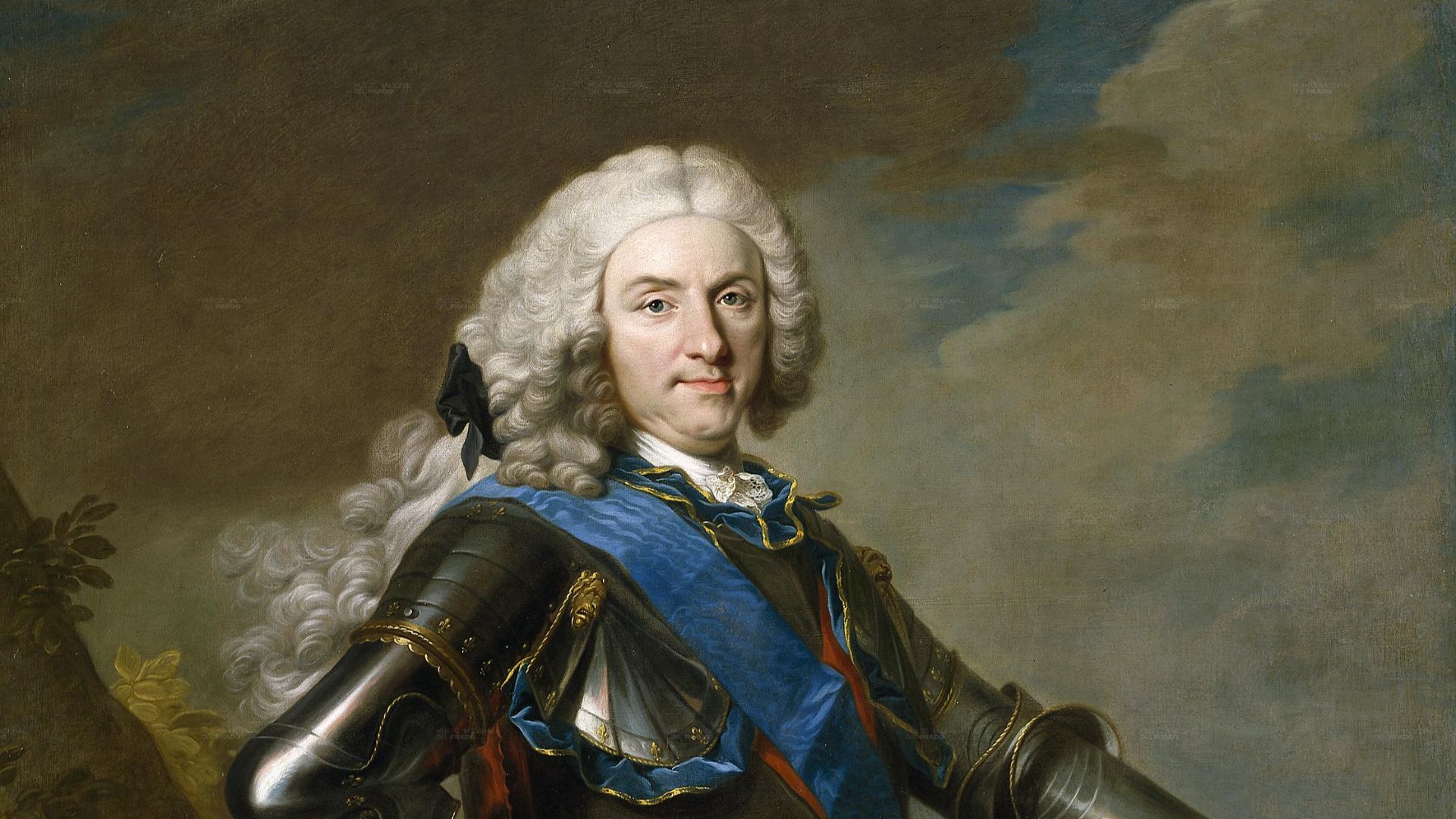 Louis-Michel van Loo, Wikimedia Commons
Louis-Michel van Loo, Wikimedia Commons
48. His Autopsy Was Gruesome
In the days following King Charles’s passing, attendants performed an autopsy on his remains. Their findings were blood-curdling. From the state of his body, it was a miracle he had lived as long as he did: His "heart was the size of a peppercorn; his lungs corroded; his intestines rotten and gangrenous”. Yet these were only their surface-level findings.
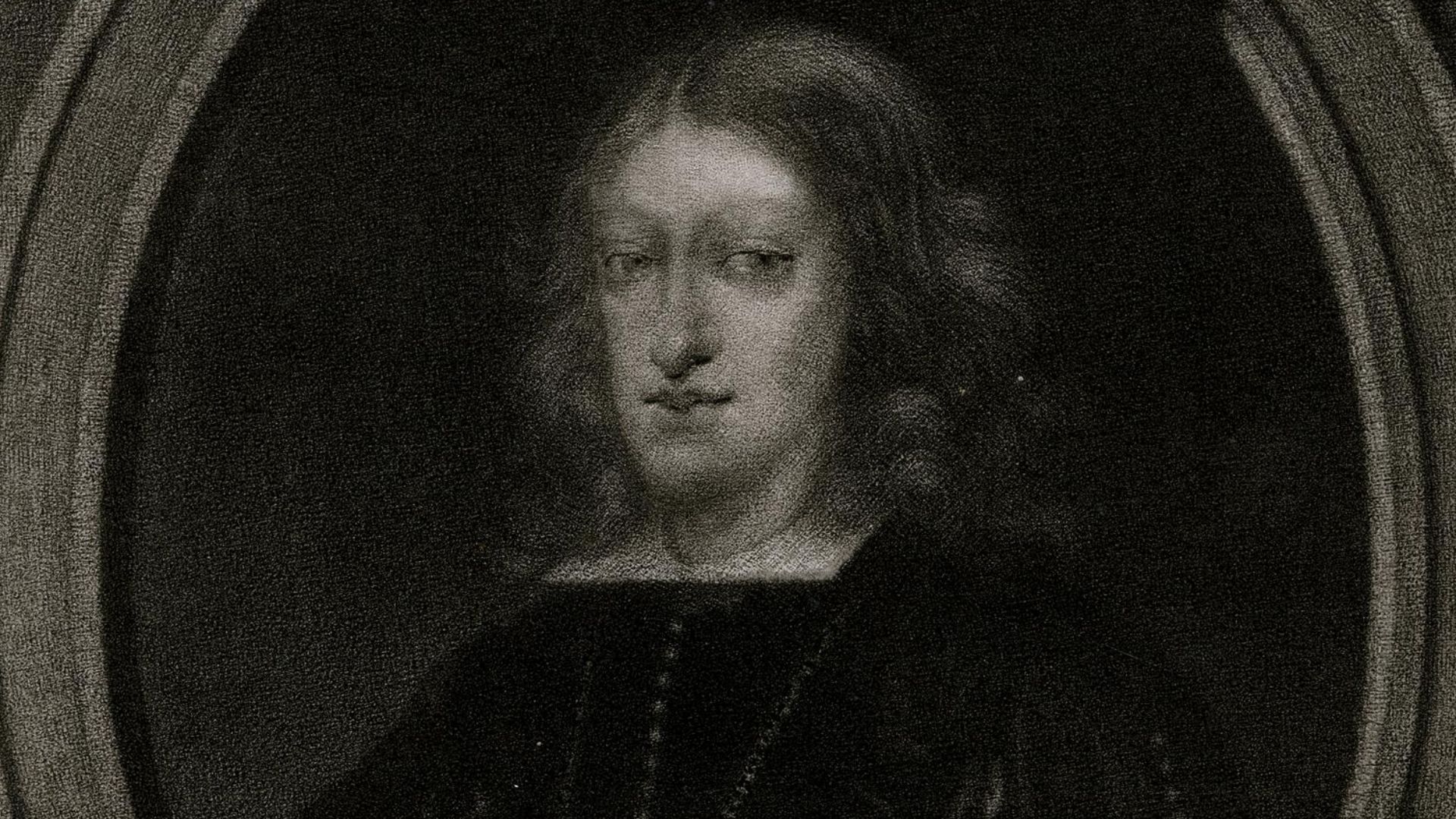 Johann Friedrich Leonart según Juan Carreño de Miranda, Wikimedia Commons
Johann Friedrich Leonart según Juan Carreño de Miranda, Wikimedia Commons
49. He Was The Problem
The most momentous discovery medics made was also their most intimate: They found that Charles only had “a single testicle” and that it was “black as coal,” indicating that it had atrophied long ago. From this information, historians believe that—as his wife Maria Anna may have suspected—Charles was wholly sterile at the end of his life.
 Wilhelm Humer, Wikimedia Commons
Wilhelm Humer, Wikimedia Commons
50. He Was The End Of An Era
King Charles II of Spain’s story is heavy with meaning, and little of it is comforting: He is a centuries-old cautionary tale about the horrors of inbreeding; the gruesome last gasp of a failing dynasty; and the coming of the apocalypse for the balance of European power. Yet, as we’ve seen, Charles’s life is often more slippery than his legend.
 British Museum, Wikimedia Commons
British Museum, Wikimedia Commons
You May Also Like:
The Rise Of Austria’s Iron Empress
The Jaw-Dropping Life Of Marie Antoinette’s Shameless Sister

